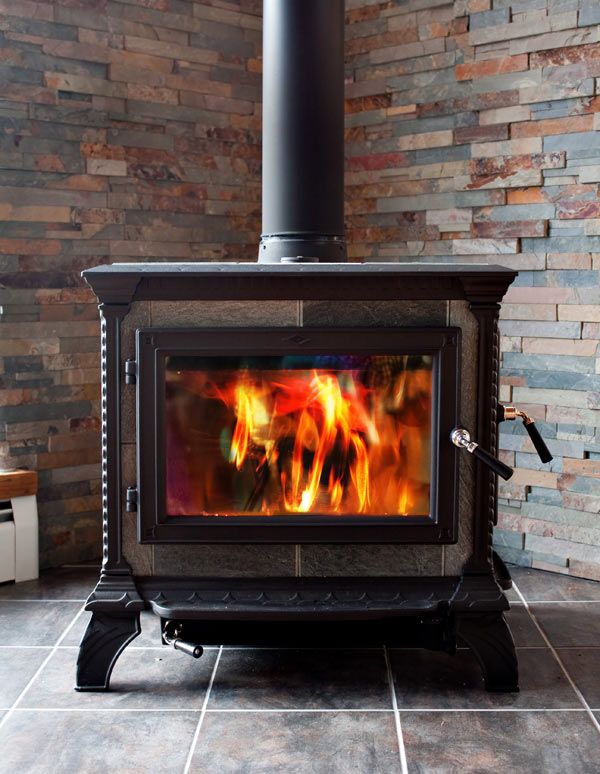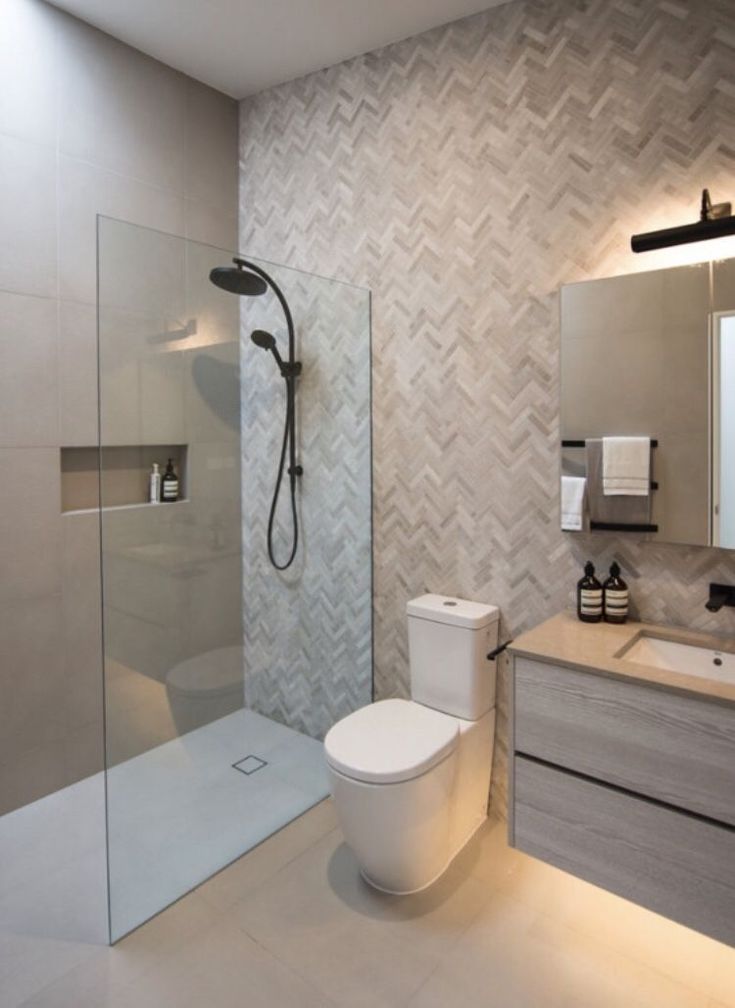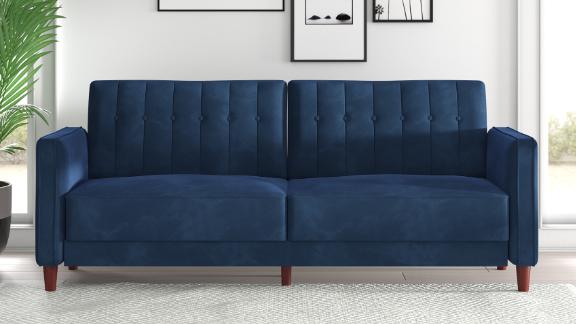Evergreens for flower beds
The Best Evergreen Shrubs for Your Garden
A reliable and easily maintainable foundation for your garden is a few evergreen shrubs away, so let’s cut to the chase and start talking shrubbery!
Good question! Unfortunately for everybody, the standard definition of a shrub is, “a woody plant smaller than a tree with multiple stems near the ground.” That leaves a lot to be explained!
Let’s skip all of that and assemble our very own idea of what constitutes an evergreen shrub:
Our list of the best evergreen shrubs covers a wide range of USDA Hardiness Zones.
Each type of evergreen shrub listed below will have at least one recommended cultivar for you to grow in your yard, and they are organized by Zone, from coolest to warmest.
As a final note, double check your growing zone before making a purchase and ensure your new shrub is a match! Specific cultivars may have more narrow ranges.
Let’s get right into it!
1. Leucothoe
A nice choice for areas ranging from the northeast to the southeastern United States, Leucothoe (Leucothoe spp. ) is a hardy, native, and deer-resistant evergreen shrub that requires minimal special care.
Better yet, it’s happy to spread beyond its initial planting area and is a great choice for a section of the garden where you have a lot of square footage to cover and are working on a budget.
Leucothoe adds a handsome dash of color, and provides you with excellent evergreen foliage.
I’m a fan of Leucothoe fontanesiana because of that gorgeous color the new foliage produces.
Check out your local nurseries for these guys, or try L. fontanesiana ‘Girard’s Rainbow,’ available from Nature Hills Nursery.
L. fontanesiana ‘Girard’s Rainbow’
This variety also tends to spread out quite happily and responds with minimal fuss to heavy pruning. I recently had to clear out over 50 percent of a hedge of L. fontanesiana and had zero hesitation doing it.
L. axillaris is the best native option to use if you’re interested in growing an all-native garden.
It is at its best in the southeastern United States, and offers handsome flowers and dependable foliage.
Squirt™ aka L. axillaris ‘Squzam’ is a compact cultivar that tops out at 18 to 24 inches with a width of two to three feet.
L. axillaris Squirt
You can find this cultivar in #3 containers available at Nature Hills Nursery.
Growing Zones: Typically Zones 5 to 8
2. Cherry Laurel
Also known as Prunus laurocerasus, this is a favorite evergreen shrub in the Philadelphia region. Blame its popularity on the characteristic deep red berries it produces, or its eagerness to grow in warm and humid regions.
Photo by Matt Suwak.The plant is happy to stand upright, and resists most pests and problems.
The only problem I’ve run into is that P.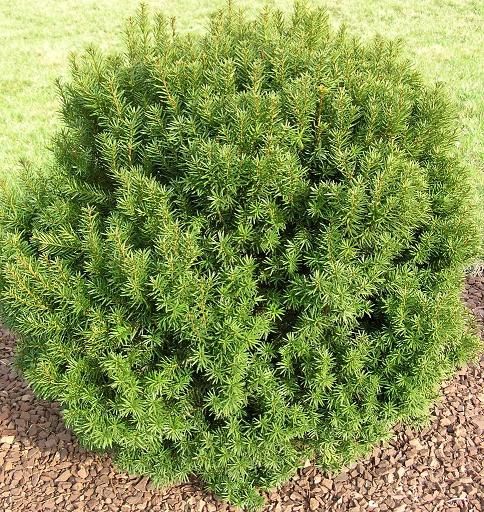 laurocerasus is happiest in a warmer environment, and can suffer in the northernmost extent of its growing ranges.
laurocerasus is happiest in a warmer environment, and can suffer in the northernmost extent of its growing ranges.
Gardeners in the northern limits of the growing area for P. laurocerasus can expect to see some branch dieback during the winter, or wind burn in exposed areas.
P. laurocerasus aka Skip Laurel
You can pick up P. laurocerasus in a variety of sizes from FastGrowingTrees.com.
P. laurocerasus ‘Otto Luyken’ is an evergreen shrub that I have plenty of hands-on experience with.
The lovely white flowers give way to gorgeous black berries, and the persistently dark evergreen foliage of this cultivar offers tremendous value as a background plant wherever you need a backdrop of green with seasonal white flowers.
P. laurocerasus ‘Otto Luyken’
You can find ‘Otto Luyken’ available from Nature Hills Nursery.
Growing in an area with little natural sunlight? Consider P.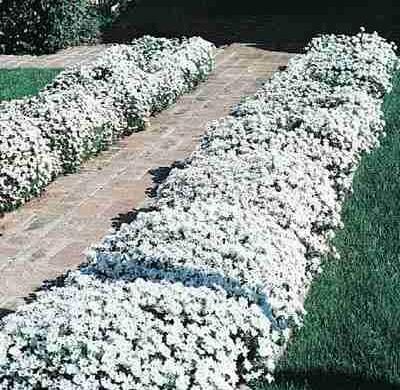 laurocerasus ‘Chestnut Hill.’
laurocerasus ‘Chestnut Hill.’
One of our landscape architects favors ‘Chestnut Hill’ over almost all others, so even though I’m sick of seeing this evergreen shrub everywhere, it’s impossible to ignore its incredible value to the landscape.
‘Chestnut Hill’
It grows taller than other members of this species, and that’s valuable in and of itself!
Pick up ‘Chestnut Hill’ in #1 and #5 containers from Nature Hills Nursery.
Growing Zones: Typically Zones 6 to 9
3. Azalea
These are a favorite of mine for about… oh… two hundred and sixty-three reasons?
Azaleas grow well in a variety of conditions and promise beautiful spring blooms. Better yet, the difference between a shaggy azalea and a well-formed one is only a matter of basic pruning.
Photo by Matt Suwak.I find that an appreciation of the azalea’s natural tendency to be wild is best countered with fearless shaping.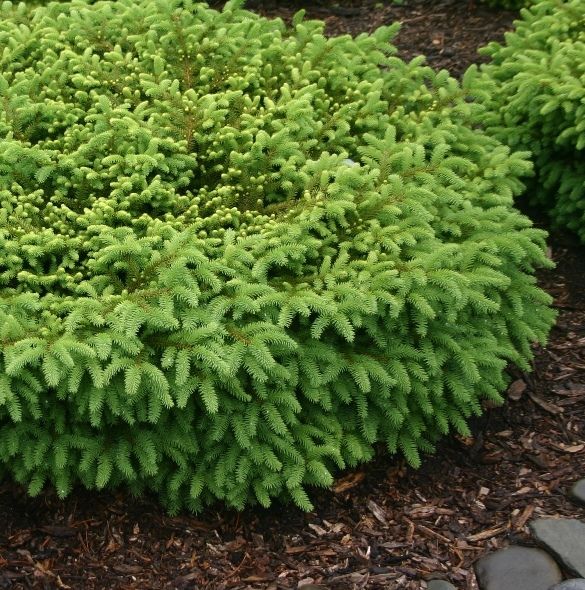
I prune azaleas in the spring immediately after flowering, but will remove obnoxious or form-ruining shoots of growth as late as September.
We have a guide on growing azaleas, complete with recommended cultivars, so check it out for more suggestions!
Choosing an evergreen variety is important for year-long performance. The evergreen azaleas tend to have thicker, leathery leaves while the deciduous varieties have a softer and more delicate leaf.
Autumn Lily® aka Rhododendron ‘Roblex’ is an evergreen cultivar that sports creamy-white blooms in springtime. It reaches a mature height of about four feet with a similar spread.
Autumn Lily® Azalea
You can find Autumn Lily® in #3 containers available at Nature Hills Nursery.
Growing Zones: Typically Zones 6 to 9
4. Yew
I love yew… that is, “yew” as in Taxus species – sorry if I got your hopes up!
Photo by Matt Suwak.
As far as reliable and handsome evergreen shrubs go, it’s hard to beat this one. It produces soft evergreen foliage as well as red berries (which contain toxic seeds) and its performance in the garden is stellar.
Some birds will eat the seeds of the yew, but these pass harmlessly through the digestive tract of the animal and cause no trouble.
While yew isn’t typically grown for its usefulness to wildlife, it doesn’t hurt to offer those birds something else to munch on.
Photo by Matt Suwak.I had a family of sparrows living in a yew bush at my last apartment and they made great use of the branches as shelter, and surely nibbled on whatever berries they could find.
Yew responds very well to pruning and shearing, and can be shaped to whatever form you desire.
These tend to be pretty resistant to most ailments as well, which makes them an excellent worry-free evergreen shrub option for your yard.
The Taunton spreading yew (T. x media ‘Tauntonii’) is a good choice for informal areas.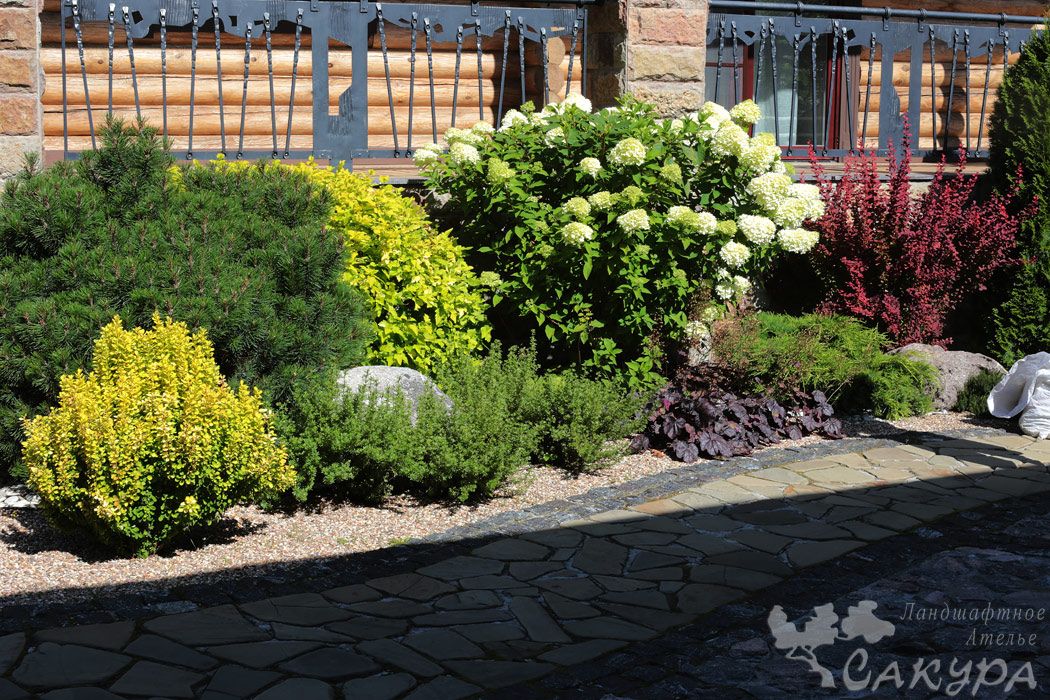 It tends to maintain a modest height of about four feet, and is happiest when it gets to go a little wild.
It tends to maintain a modest height of about four feet, and is happiest when it gets to go a little wild.
Taunton Spreading Yew
You can find ‘Tauntonii’ in #3 and #5 containers available at Nature Hills Nursery.
If you allow your ‘Tauntonii’ to grow free, you’ll see its branches develop into long “shoots” that have always reminded me of a porcupine.
I’ve used these in rock gardens and areas where too much formality isn’t necessary.
For a more formal and solid hedge, check out Hicks yew (T. x media ‘Hicksii’). It reaches a height of nearly 12 feet, and responds well to heavy pruning for growth as a formal privacy hedge.
Hicks Yew
Hicks yew grows across most of North America so it is perfect for many gardens, as long as they aren’t too wet!
You can pick up Hicks yew from Nature Hills Nursery in #3 containers.
Growing Zones: Typically Zones 4 to 7
Find more tips on growing and caring for yew here.
5. Euonymus
Euonymus for all of us! I like these guys because of the variety in form and color you can find, and except for being a bit messy, these evergreen shrubs aren’t plagued with pests and other problems.
Photo by Matt Suwak.You can find tall and upright Euonymus species, as well low and controlled ones.
Most folks are familiar with the variety known as burning bush, but the evergreen varieties of this plant are where Euonymus is at its best.
Although the shrub seems to do best when it’s allowed to grow free and kind of wild, I’ve seen perfectly manicured Euonymus hedges before as well.
The handsome colors of this evergreen shrub are also easy to work with in the garden, and add plenty of variety and stable year-round color to your yard.
Euonymus kiautschovicus ‘Manhattan’ grows to six feet tall in Zones 5 to 10, and is a good option for warmer climates.
‘Manhattan’ Euonymus
With a simple green leaf that’s still lustrous and handsome, it benefits from a bit of protection from strong winter winds to avoid leaf burn.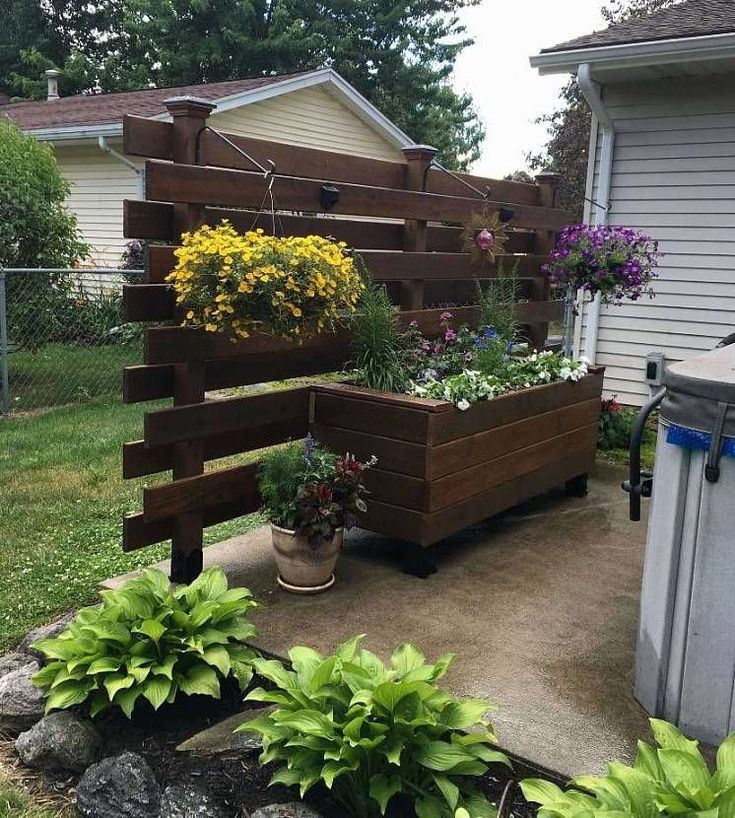
You can find ‘Manhattan’ in #3 containers available at Nature Hills Nursery.
For a shorter option, try E. fortunei ‘Emerald Gaiety.’ Not only does it offer a more modest height and spread than others, its soft colors promise to highlight and never detract from the rest of your garden.
‘Emerald Gaiety’ Euonymus
You can find this cultivar available at Nature Hills Nursery in #2 containers.
This evergreen shrub can even become a climber if provided with the right supports, like a trellis or arbor!
Growing Zones: Typically Zones 5 to 9
Read more about growing and caring for Euonymus bushes here.
6. Mugo Pine
The mugo pine, or Pinus mugo, is a favorite of mine.
I don’t know why, exactly. It might be that it’s just a simple pine tree, and it might have something to do with its somewhat contorted growing habit, but I love this evergreen shrub.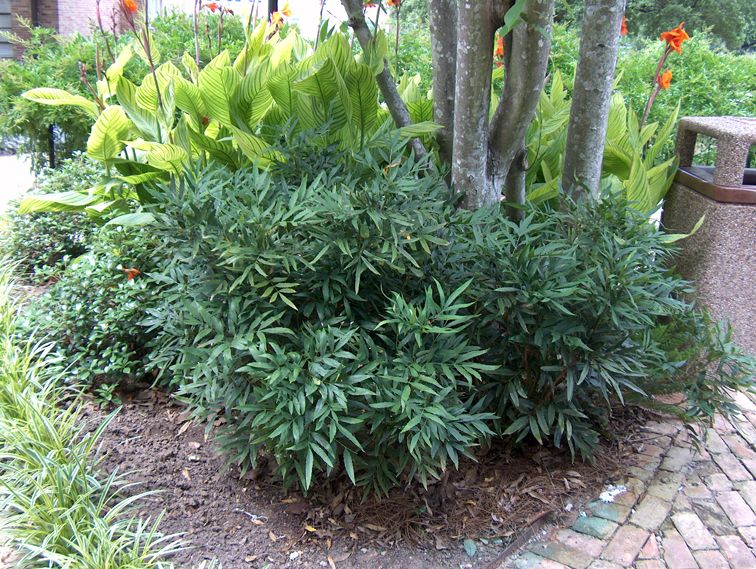
The mugo pine is great in rock gardens and gardens with an Asian theme, but it will thrive in just about any dry and rocky area.
If there’s a headache related to mugos, it’s that they can be pretty slow growing.
But that’s alright, since it’s hard to find a good evergreen shrub that looks as unique as a mugo and stays small and contained.
With a little bit of patience, you’ll have something that works as a statement piece while providing attractive background color.
My favorite option with this plant: the dwarf mugo pine (P. mugo var. pumilio). It’ll reach a height of about four feet and spreads out up to 10 feet.
Dwarf Mugo Pine
You can find dwarf mugo pine available from Nature Hills Nursery.
Hardy and self-reliant, this is the perfect option for the garden when you want to plant it and forget it.
Growing Zones: Typically Zones 2 to 8
7. Pieris Japonica
Also known as Japanese adromeda or pieris, Pieris japonica is a lovely show-off of an evergreen shrub.
Whether you’re in it for the lustrous evergreen foliage highlighted with tinges of red and gold or the cascade of bell-shaped flowers, P. japonica deserves a place in your garden.
Photo by Matt Suwak.These evergreen shrubs prefer a shady spot where they will be protected from drying winds, and like to set roots into acidic soil.
Well-draining soil is preferred, to prevent nasty fungal infections, and this species is susceptible to many of the same conditions as azaleas.
More specifically, you’ll want to keep an eye out for powdery mildew, bark scale, whiteflies, and leaf miners, and calcium deficiencies.
Photo by Matt Suwak.I’ve only seen pieris used as foundation points in the garden and never as a hedge, but it could be something worth pursuing!
Its colors are similar to that of Leucothoe and the two could make an interesting pairing in the garden.
Mountain Snow™ pieris (aka P.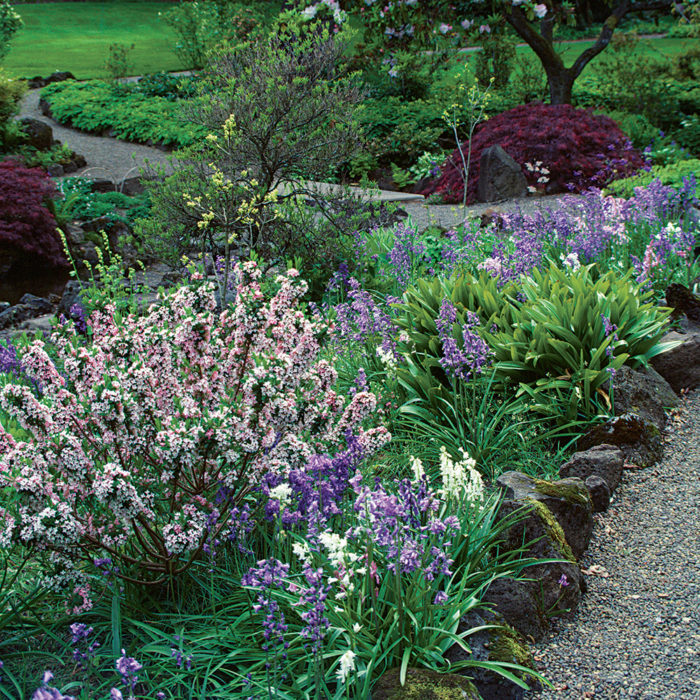 japonica ‘Planow’) is my personal favorite. It maxes out at a height of about five feet and has a similar spread, but the real appeal is the bright red color of new growth.
japonica ‘Planow’) is my personal favorite. It maxes out at a height of about five feet and has a similar spread, but the real appeal is the bright red color of new growth.
Mountain Snow Pieris
You can find Mountain Snow™ available at Nature Hills Nursery.
Really a fantastic sight to behold in your own garden!
For a more restrained option, check out P. japonica ‘Cavatine.’
Its height of about two feet with a similar spread requires no special pruning, and its foliage maintains a green color accented with beautiful flowers.
‘Cavatine’ Pieris
A short row of ‘Cavatine’ is jaw-dropping when in full bloom.
Pick up this cultivar at Nature Hills Nursery.
Growing Zones: Typically Zones 5 to 9
8. Viburnum
The Viburnum genus offers a variety of evergreen options, and plants are usually quick to fill up space in the yard.
Because the list of available types of viburnum is huge, you’re just about guaranteed to find one that will be happy in your garden’s conditions.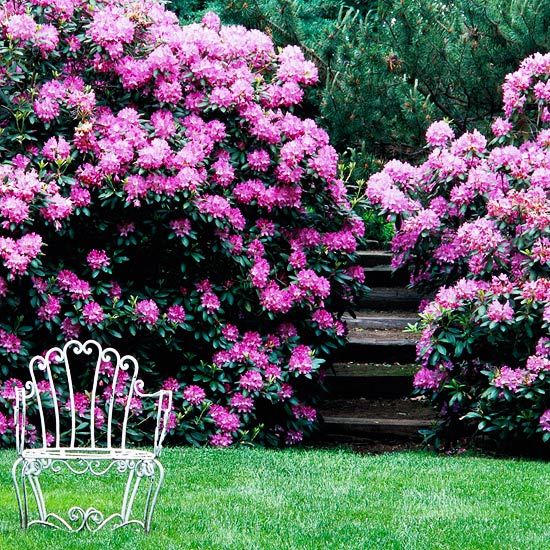
Just keep an eye out when you’re purchasing these at a garden center or selecting one other than those on our suggested list. Some varieties of viburnum can grow to be huge and others are more deciduous in nature.
Still others can be pesky to prune, like the leatherleaf variety, because they produce an irritating sort of dust on the leaves.
This dust is easily visible when the leaves are shaken, and can make maintaining these shrubs an uncomfortable experience.
While the dust isn’t harmful, it is irritating, so I wear an isolation dust mask when working with them. Alternatively, spraying the foliage with a hose helps to minimize any falling dust.
Even so, these flowering evergreen shrubs are a solid choice for your yard and tend to be considerably resistant to pests and diseases.
They also take well to pruning and don’t require much more than some general maintenance, though thickly overgrown masses of viburnum may require heavier removal of old limbs.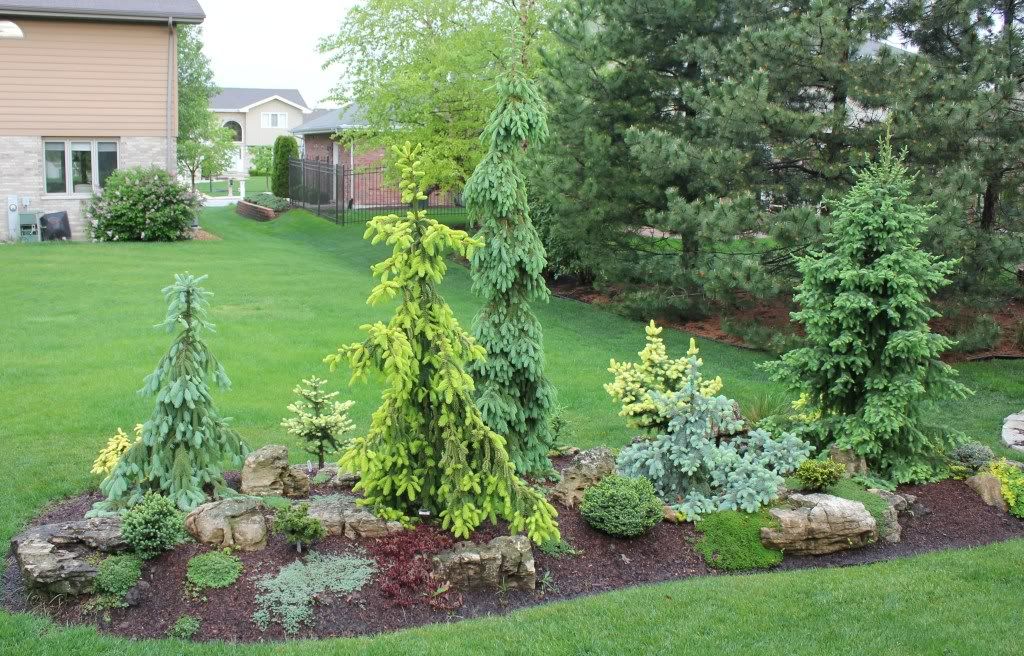
Despite its drawbacks, I love the leatherleaf type (V. rhytidophyllum) as my evergreen viburnum of choice! It can reach a height of about ten feet and loves to spread out, sending up new leads of growth during every growing season.
It will bloom from May through June with clusters of fragrant yellowish-white flowers, and tapers off as the summer heat intensifies.
Leatherleaf Viburnum ‘Allegheny’
But these unassuming flowers do not detract from the rest of the garden. Prune them immediately after flowering, because viburnum starts setting new buds in the fall!
Pick up ‘Allegheny’ leatherleaf viburnum from Nature Hills Nursery in #3 containers.
Growing Zones: Typically Zones 3 to 9
Find more information about growing viburnum here.
9. Mahonia
One of my favorite evergreen shrubs, mahonia is a plant for people who want something tough and edgy that doesn’t skimp on visual appeal.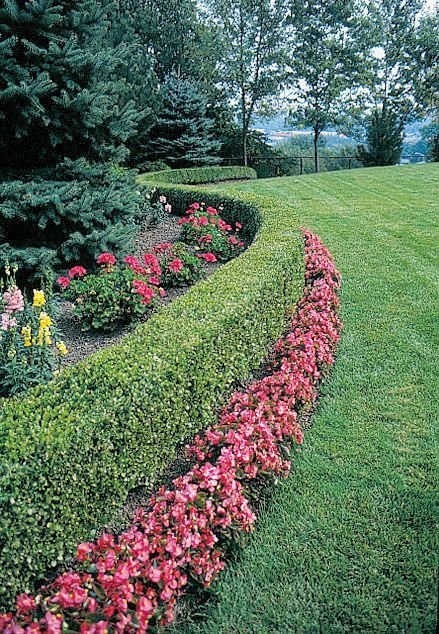
It looks like a short and stubby cross between a holly and a staghorn sumac, except it has some very lovely colors and fruits that add a nice accent to the dark green leaves.
But this is one prickly customer that isn’t for everyone, or for every location.
The leaves are rather sharp and pointed, and tend to aggravate anybody who handles them. It’s also simultaneously a slow grower and a plant that is all too happy to produce volunteer seedlings.
That said, if you’ve got room for a prickly evergreen shrub to ward off trespassers, or you simply want to add a bit of rough-and-tumble flavor to your yard, give mahonia a shot.
It’s handsome and worthwhile in its own way, and might be the perfect evergreen shrub for your home!
For a less prickly customer, consider Mahonia eurybracteata ‘Soft Caress.’ The leaves have less of an edge or point than other cultivars, and this variety is happy to grow in the shade.
‘Soft Caress’ Mahonia
It also has a short growth habit and spread, reaching about four feet tall and wide. The only hang-up is that it’s acclimated only to the narrow swath of Zones 7 to 9.
The only hang-up is that it’s acclimated only to the narrow swath of Zones 7 to 9.
You can find ‘Soft Caress’ available in #3 containers from Nature Hills Nursery.
M. aquifolium Oregon Grape
If you want the real deal, the species plant, M. aquifolium is available in three-gallon containers from FastGrowingTrees.com.
The plant will reach nearly eight feet in height and about six feet in width, producing beautiful bluish-purple berries that wildlife like small birds and insects adore.
Growing Zones: Typically Zones 5 to 9
10. Boxwood
Our evergreen shrub roundup would not be complete without that trusty garden companion, the boxwood (Buxus spp.).
Now, I need to admit I have a certain distaste for boxwood because of how often I see it used on the properties where I garden, and you can only prune so many hundreds of them before you develop a similar distaste yourself.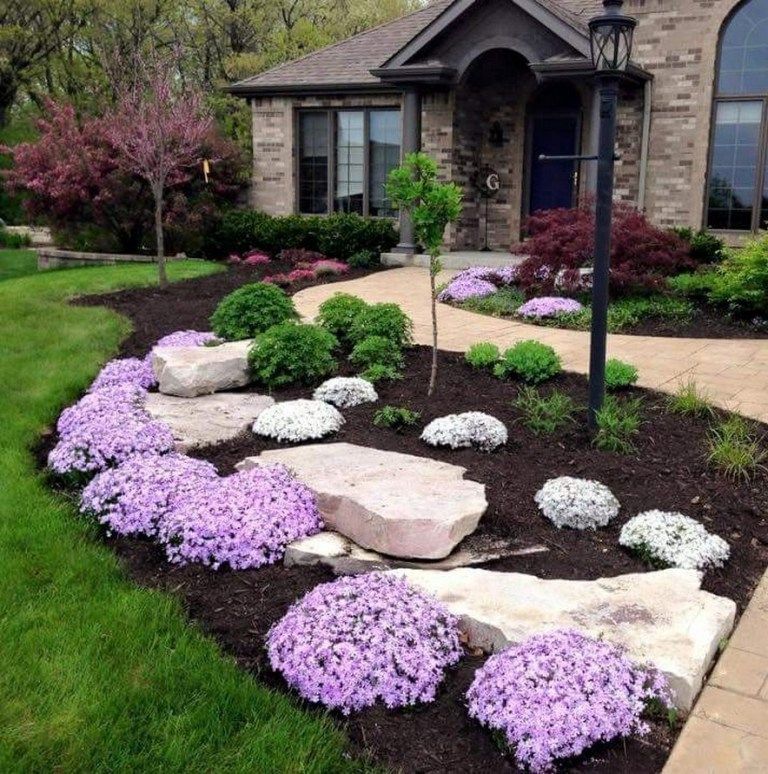
But all of that aside, boxwoods are an ideal evergreen shrub because of their ease of growth, tendency to maintain a uniform growing pattern, and their eager response to pruning.
They maintain their color year-round, and are not typically not prone to many illnesses, though boxwood blight is typically fatal to these shrubs.
Use boxwood as a long hedge, or to add individual spots of green in your landscape. I like to think of them as giant green meatballs, dotting the yard. They work well in almost any capacity, and there are enough cultivars to find exactly what you need.
My personal favorite is B. microphylla var. japonica ‘Winter Gem’ because of its strong form and more appealing foliage.
These work ridiculously well as a long hedge of green meatballs, and are a breeze to prune.
‘Winter Gem’ Boxwood
They’re also stronger against winds, snowfall, and general abuse than other boxwoods I’ve worked with.
You can find ‘Winter Gem’ available from Nature Hills Nursery in #1 containers.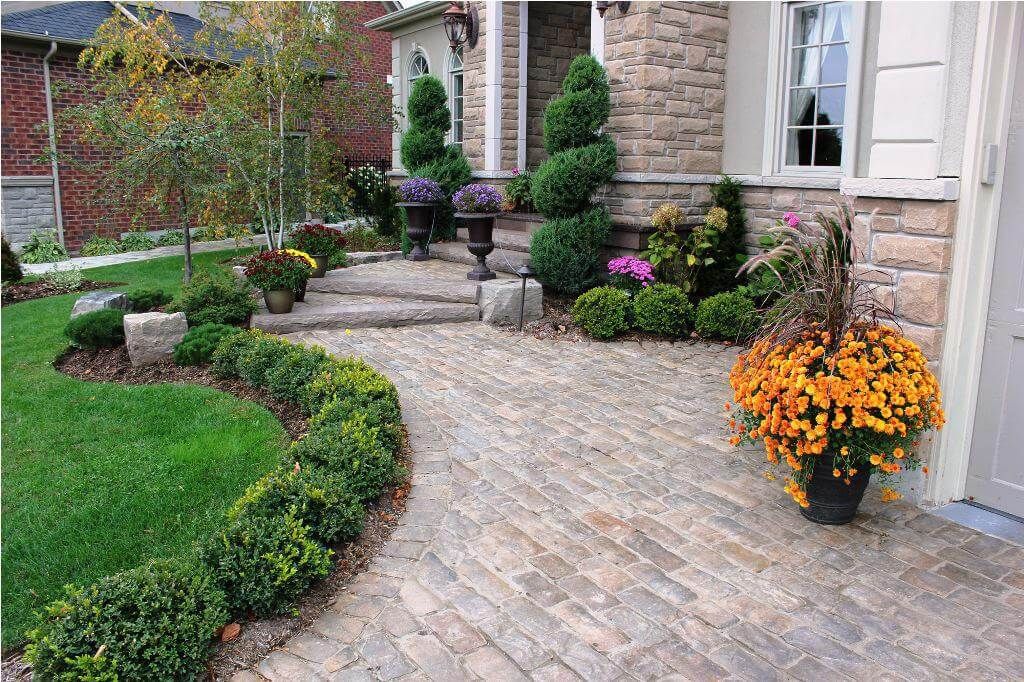
For a more conical plant, try B. x ‘Green Mountain.’
‘Green Mountain’ Boxwood
With softer foliage and a more upright growing habit, this is a good choice if you want to sprinkle a few around your yard as reliable and upright evergreen shrubs that don’t steal the show.
Pick up ‘Green Mountain’ in a choice of #1 or #3 containers from Nature Hills Nursery.
Growing Zones: Typically Zones 4 to 8
Read more about growing boxwood here.
11. Juniper
Juniper (Juniperus spp.) is an old favorite of mine. It was one of the first shrubs I worked extensively with on a tree nursery where I once worked, and I eventually came to savor the irritating feeling their needles provide to bare skin.
Cossack juniper (J. sabina).Add to those memories its absolute ease of growing, and you’ve got yourself a worthwhile evergreen shrub!
Variety could be juniper’s middle name. You’re able to find low-growing and ground-hugging varieties next to others that grow to become 100-foot-tall trees, and a huge variety of perfectly-sized evergreen shrubs for your yard.
You’re able to find low-growing and ground-hugging varieties next to others that grow to become 100-foot-tall trees, and a huge variety of perfectly-sized evergreen shrubs for your yard.
If you’ve got a dry and rocky area where nothing seems to grow, pop in a juniper and watch it take off.
These shrubs are perfect for soil retention and as foundational hedges, though the low-growing varieties offer excellent evergreen ground cover.
My go-to favorite is ‘Blue Rug’ juniper (J. horizontalis ‘Wiltonii’) as both a ground cover and an accent in the garden.
‘Blue Rug’ Juniper
It’s perfect for growing over and then cascading down a wall or arrangement of stone, and its short height of about six inches is offset by its spread of up to eight feet!
You could buy a handful of ‘Blue Rug’ junipers, available via Plants by Mail, and cover an entire area very quickly, all with a cool blue color.
If you prefer a plain green color, try J.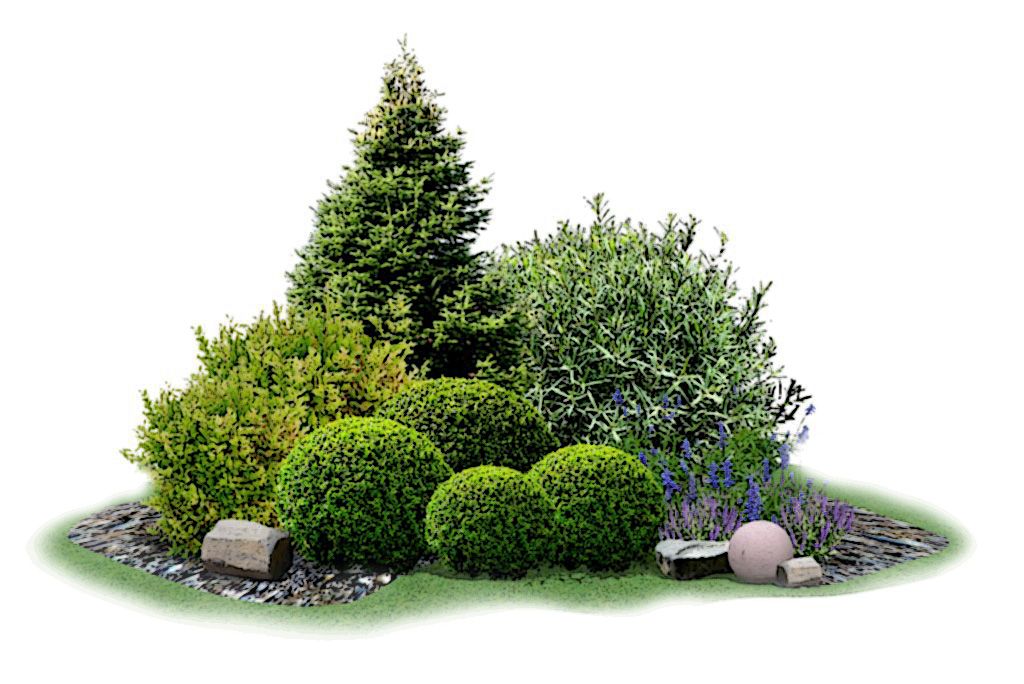 chinensis ‘Sea Green.’ This cultivar reaches up to about six feet in height and is as easy to care for as they come.
chinensis ‘Sea Green.’ This cultivar reaches up to about six feet in height and is as easy to care for as they come.
These will fill in areas quickly, so plant smartly! Its soft-textured foliage can hide foundations from view, and break up spaces dominated by structures like decks and other backgrounds as well.
Growing Zones: Typically Zones 2 to 8
Read more about growing junipers here.
12. Yucca
I’ll add some Yucca (Yucca spp.) to this list because they’re gorgeous, hardy, and produce one of the coolest flowers you’ll ever see!
Their status as “shrubs” might be up for debate, but in warmer regions of the country, this is a solid choice for year-round greenery.
Photo by Allison Sidhu.Sharp and upright rosettes of thick green leaves identify this plant, but its enormous flower stalk makes this an evergreen shrub that functions as the main act!
The foliage is unique among evergreen shrubs, and adds some fun variety to the texture of your garden.
They are highly resistant to… well, pretty much everything, and that’s a big plus in our book.
As the plants age and weather, they produce little twisted bits of fiber, making these a suitable option for those who don’t mind a wilder looking garden.
I’m a sucker for variegated plants, so Y. filamentosa ‘Color Guard’ is my first suggestion. Once established, it requires very little attention, and it can be divided every few years. It reaches a height of one to two feet. Not bad!
‘Color Guard’ Yucca
You can pick up ‘Color Guard’ in quart-sized containers from Nature Hills Nursery.
For a more uniform color, try Y. filamentosa aka Adam’s needle. The species plant from which the above described cultivar was derived, it produces an almost identical flower and reaches heights of two to four feet.
Yucca filamentosa
Stagger the two of these together, and you’ll find they nicely complement each other.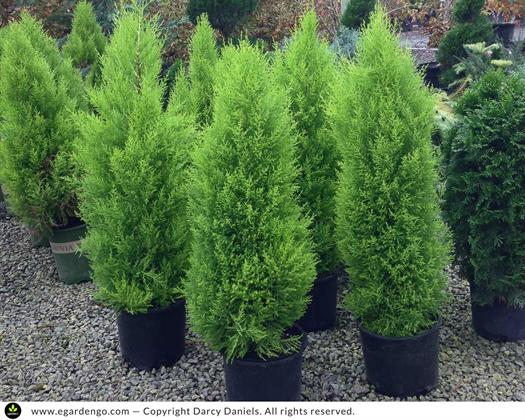
Pick up Y. filamentosa in #2 and #3 containers from Nature Hills Nursery.
Growing Zones: Typically Zones 4 to 10, might survive in Zone 11 in protected conditions
Find more info on yucca care here.
13. Rosemary
Our last is something most of us grow as an herb, but for gardeners way down in Zone 11, Salvia rosmarinus (syn. Rosmarinus officinalis) ‘Tuscan Blue’ can serve as an excellent evergreen shrub!
It is a plant that does not respond well to wet feet or cold conditions and prefers warmer, drier climates.
Rosemary can reach heights of six to 10 feet, and produces beautiful and delicate blue flowers. It’s one of the few evergreen shrubs that produces something edible and makes a worthwhile addition to a kitchen garden.
‘Tuscan Blue’ Rosemary
You can find ‘Tuscan Blue’ rosemary in #1 containers at Nature Hills Nursery.
Growing Zones: Typically Zones 8 to 11, might survive mild winters in Zone 7
Big, Green, and Reliable: Evergreen Shrubs Are the Way to Go!
Oftentimes, we think of evergreen shrubs as plain, boring background plants in the garden. And that’s true, to some extent.
And that’s true, to some extent.
A solid hedge of green or some reliable and easy-growing shrubs in the yard help bind everything together. But some of these can be showstoppers themselves, and that’s pretty great!
It’s impossible to put together a list of every single evergreen shrub out there, so I’ve focused on the ones I can personally recommend and endorse here. Which ones will you choose to add to your garden space?
Let us know! I’m always happy to read suggestions and questions in the comment section below.
For even more woody shrub suggestions for the garden, read these guides next:
- 15 of the Best Woody Shrubs for Fall Color
- How to Grow and Care for Yaupon Holly
- 13 Salt-Tolerant Evergreen Shrubs: What to Plant Between the Sidewalk and the Street
20 Essential Evergreen Shrubs - Best Types of Evergreen Bushes
Country Living editors select each product featured. If you buy from a link, we may earn a commission. More about us.
If you buy from a link, we may earn a commission. More about us.
Every single garden needs these evergreen bushes.
By Arricca SanSone
fotolinchen
Evergreens are an essential part of any garden, no matter where you live across the country. They provide year-round color, texture, and privacy and offer food and shelter to birds and wildlife. There are thousands of types of evergreen shrubs in every size and shape with shades of green ranging from deepest emerald to sunny golden-green. Some varieties tolerate extreme heat and cold, so be sure to read the plant label or description when shopping to find one that's suited to your USDA hardiness zone (find yours here). When you're planning your garden, don't forget to pay attention to how tall and wide the plant gets, especially if you're considering a fast-growing shrub.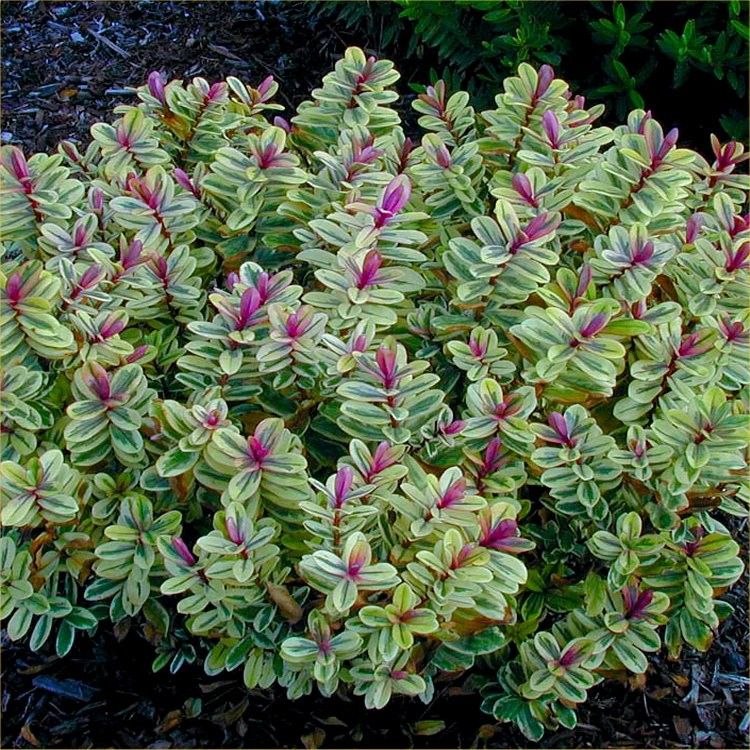 That cute little shrub won't stay tiny forever, and you don't want to create a maintenance nightmare by having to prune it three times a year. The good news is that many new varieties of shrubs have been developed in recent years to stay nice and compact, so they fit well up against your house as a foundation planting or in containers to flank your front door or patio steps.
That cute little shrub won't stay tiny forever, and you don't want to create a maintenance nightmare by having to prune it three times a year. The good news is that many new varieties of shrubs have been developed in recent years to stay nice and compact, so they fit well up against your house as a foundation planting or in containers to flank your front door or patio steps.
Here are our favorite evergreens (including flowering shrubs!) for your garden.
helga_sm
1 of 20
False Cypress
This cold-tolerant shrub has graceful limbs and pretty needles. Many varieties grow in a pyramidal or roughly pyramidal shape, which makes a nice, low-maintenance accent plant.
Why We Love It: Soft fern-like needles
SHOP FALSE CYPRESS
Alexandra Grablewski
2 of 20
Gardenia
Beautiful glossy, dark green foliage and creamy white fragrant blooms make this shrub just about perfect for every warm climate! Some newer varieties rebloom all season long.
Why we love it: Eye-catching scented blooms
SHOP GARDENIAS
demerzel21
3 of 20
Hemlock
Dense branching and finely textured foliage make this shrub a winner as a specimen or planted in a mass to create an interesting screen. Most tolerate some shade.
Why We Love It: Graceful appearance with cute little cones
SHOP HEMLOCK
Nahhan
4 of 20
Mirror Bush
This evergreen has super-shiny leaves in bright lime green or pinks! It's suited only to warm climates, but in colder parts of the country, keep it potted and bring indoors to enjoy as a houseplant over the winter.
Why we love it: Interesting, shiny leaves
SHOP MIRROR BUSHES
Diane Labombarbe
5 of 20
Inkberry Holly
Upright branches and a mostly round shape make this lesser-known native holly a good plant for foundation planting or along walks.
Why We Love It: Good substitute for boxwood
SHOP INKBERRY HOLLY
Joseph Strauch
6 of 20
Blue Holly
Featuring sharp, pointy leaves and bright red berries, this is the type of holly most commonly associated with the holidays.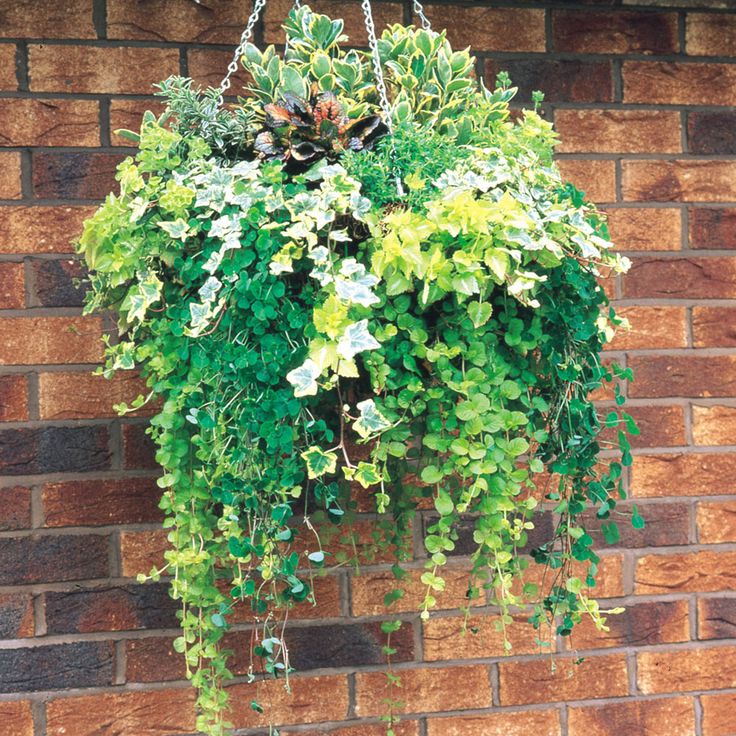 Make sure you have both “female” and “male” plant types so berries will form.
Make sure you have both “female” and “male” plant types so berries will form.
Why We Love It: Winter color and a classic holiday feel
SHOP BLUE HOLLY
freemixer
7 of 20
Arborvitae, Pyramidal Form
These pyramidal forms include many different heights, ranging from a few feet to 30 feet tall or more. Bonus: Most don’t need shearing to maintain their conical shape!
Why We Love It: Hardy and fast-growing evergreen
SHOP ARBORVITAE, PYRAMIDAL FORM
MaYcaL
8 of 20
Arborvitae, Round Form
Arbs that grow in a roundish form are, let’s just say it: adorable! Many stay in the 12- to 24-inch-tall range, so you can tuck them just about anywhere in the landscape. And they’re super tough in cold climates.
Why We Love It: Dwarf evergreen shrub
SHOP ARBORVITAE, ROUND FORM
Supersmario
9 of 20
Wintercreeper
This lovely shrub has a mounding form, making a nice foundation planting.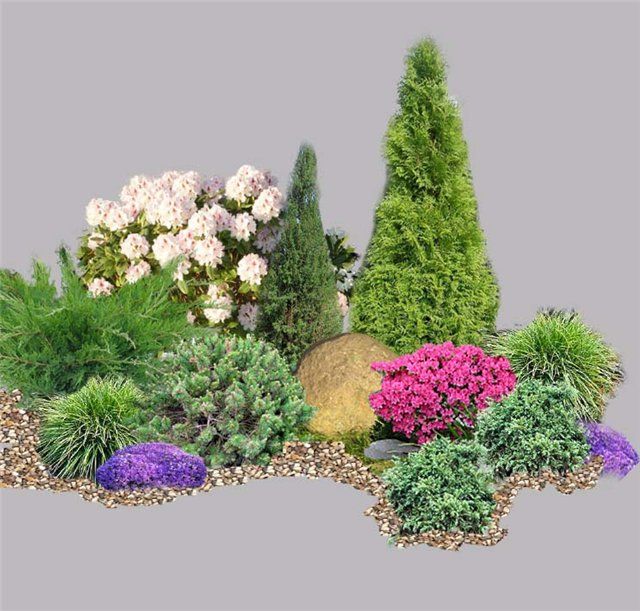 Many types have variegated leaves tinged with gold and green or white, which turn pinkish to red in for bright winter color.
Many types have variegated leaves tinged with gold and green or white, which turn pinkish to red in for bright winter color.
Why We Love It: Evergreen shrub for shade
SHOP WINTERCREEPER SHRUBS
Rosemary Calvert
10 of 20
Azalea
These shrubs with glossy green leaves put on a show in early spring with lovely shades of pinks, peach, coral, purple, or white flowers. Some types, which are suited to warmer climates, re-bloom. Make sure to purchase an evergreen (not a deciduous) variety if you want it to retain its foliage year-round.
Why We Love It: Evergreen flowering shrub for shade
SHOP AZALEAS
ed chechine
11 of 20
Juniper
Junipers come in a ton of different shapes and sizes with colors ranging from blue-green to gold. Some are low-growing and hug the ground while other types are more upright.
Why We Love It: Extremely cold-hardy evergreen
SHOP JUNIPERS
dmf87
12 of 20
Boxwood
Tiny rounded leaves that keep their deep green color through the coldest months make boxwood an all-time favorite for landscapes.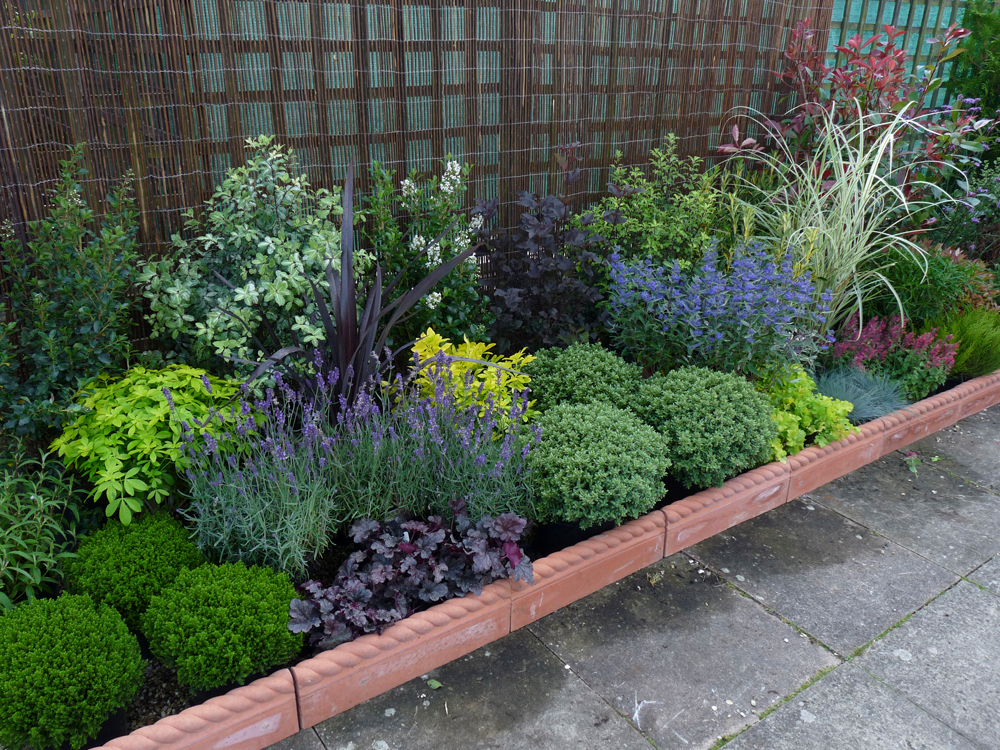 Most types can be sheared into a hedge, ball form, or left to grow in a more naturalized shape. Look for newer, disease-resistant varieties that don't need coddling.
Most types can be sheared into a hedge, ball form, or left to grow in a more naturalized shape. Look for newer, disease-resistant varieties that don't need coddling.
Why We Love It: Classic shrub that works in many garden settings
SHOP BOXWOODS
RICHARD RADFORD
13 of 20
Rhododendrons
Against this plant's deep green shiny leaves, showy flowers in brilliant purples, pale pinks, and snowy whites pop. Once grown only in warm climates, some new varieties are cold-tolerant. They prefer dappled shade and are nice as a hedge or accent plant.
Why We Love It: Evergreen flowering shrub
SHOP RHODODENDRONS
seven75
14 of 20
Yew
This shrub has dense, finely textured foliage and attractive reddish bark. There are both low-growing and upright varieties.
Why We Love It: Cold-hardy evergreen shrub
SHOP YEWS
OllgaP
15 of 20
Spruce
These conifers come in a startling array of options from dwarf to gigantic.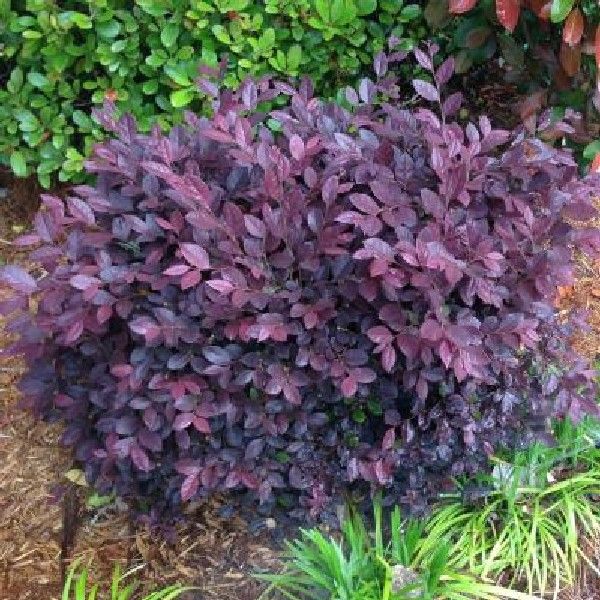 They’re pretty garden accents, especially some of the dwarf or weeping varieties.
They’re pretty garden accents, especially some of the dwarf or weeping varieties.
Why We Love It: Dwarf and tall evergreen shrubs in many interesting shapes
SHOP SPRUCE TREES
Getty Images
16 of 20
Japanese Holly
With small, rounded leaves and many interesting forms, Japanese holly boasts a strong architectural form to add as an accent to your garden or in pots flanking your front door.
Why We Love It: Strong architectural form
SHOP JAPANESE HOLLY
Dan Rosenholm
17 of 20
Fir
Interesting needles and showy cones are the hallmark of many types of fir trees. Dwarf evergreen shrub varieties of fir form a carpet and work well in rock gardens, while upright types make a sensational focal point.
Why We Love It: Unique foliage and cones
SHOP FIR TREES
rotofrank
18 of 20
Mugo Pine
This hardy pine works beautifully in rock gardens, mass plantings, and mixed with other broadleaf plants. Colors range from deep green to gold.
Colors range from deep green to gold.
Why We Love It: Unique forms and slow-growing so it doesn't crowd everything else out in a hurry
SHOP MUGO PINES
Meindert van der Haven
19 of 20
Cedar
These evergreens have a striking form and elegant blue-green foliage. Some grow quite tall, so read the plant description before buying.
Why We Love It: Striking profile in the garden
SHOP CEDAR TREES
STEVEN WOOSTER
20 of 20
Mahonia
This low-care shrub has bright flowers that appear in late winter to early spring and become blue to black berries by late summer to fall. It’s perfect in mass plantings.
Why We Love It: Evergreen flowering shrub
SHOP MAHONIA SHRUBS
Your Yard Needs These Perennial Flowers and Plants
Arricca SanSone Arricca SanSone writes for CountryLiving.com, WomansDay.com, Family Circle, MarthaStewart.com, Cooking Light, Parents.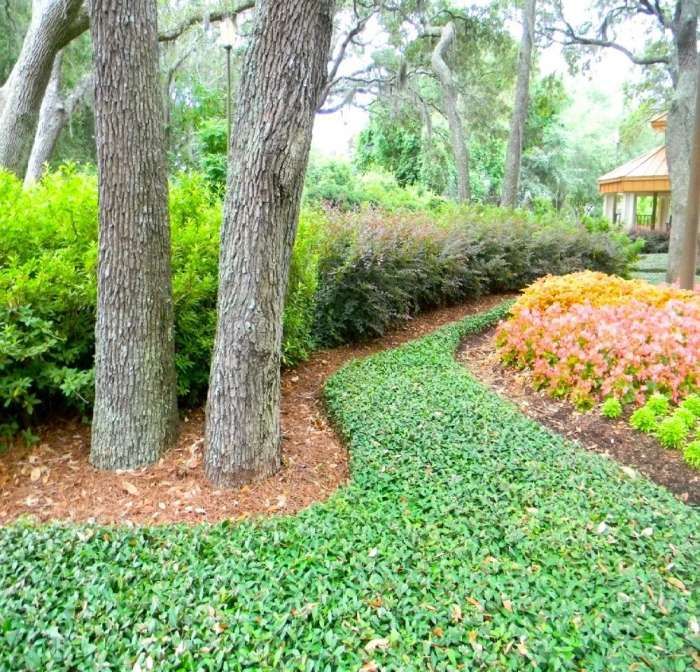 com, and many others.
com, and many others.
photos and names, flowerbed ideas, videos
Contents:
- Trees
- Shrubs
- Dwarf forms
- Ground covers
- Video
Evergreens are ornamental all year round. First of all, these are conifers, in summer they effectively emphasize the beauty of the surrounding flowers, and in winter they solemnly turn green against the background of white snow. But we decided to talk about deciduous, mostly of southern origin, which are also very popular in landscape design. We offer an overview of interesting types of evergreens for the garden with photos, names and brief descriptions, ideas for creating compositions with their participation.
Experienced gardeners turn trees and shrubs into original topiaries with curly haircuts
Evergreen perennials are represented by all life forms: trees, shrubs, subshrubs, shrubs, herbaceous plants.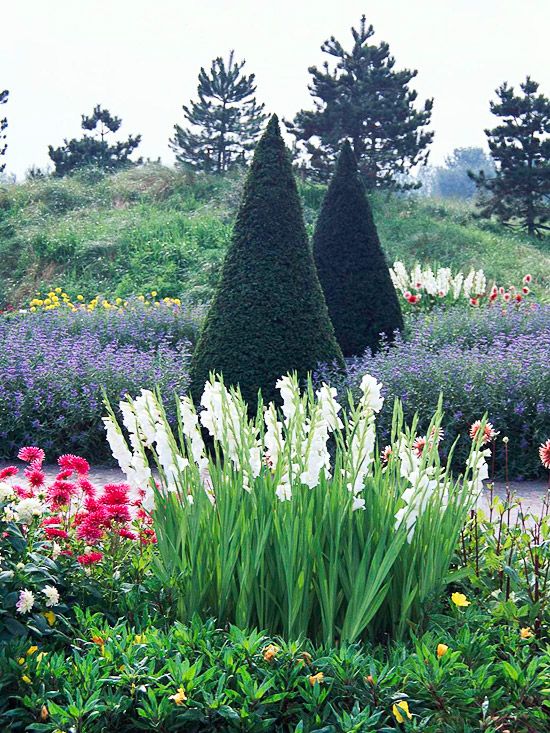
Trees
Trees, which retain their decorative effect all year round, are planted on the site both singly and in groups, create hedges, and make the main accent in the mixborder.
Berry yew
Berry yew belongs to the class Coniferous, family Yew. It grows up to 20 m in height, although this will take more than one century. Unlike conifers, it does not have cones, but seeds surrounded by a fleshy, juicy red shell, similar to berries. Therefore, it is also called "mahogany".
All parts of the plant, except for the shell of the fruit, are poisonous!
Relic trees are common in the Caucasus, the Black Sea coast. In culture, shrub forms are more often used.
"Repandence" is a short, shrubby yew growing up to 50 cm. It is planted on alpine hills, in mixborders, along paths, around ponds
Varieties with an unusual color of needles are interesting. For example, "David" (bright green), "Summergold", "Cooper Gold" (yellow), "Elengatissima" (light green, cream). All of them are suitable for growing in the middle lane.
All of them are suitable for growing in the middle lane.
"Elengatissima" grows no more than half a meter, the intensity of the color of the needles depends on the illumination
Boxwood
Boxwood occurs in tree and shrub form, about 30 varieties are known. Trees can grow up to 12-15 m. These are also ancient, relict plants, forming in nature, together with yew, large yew-boxwood groves. Boxwood has leathery, oblong leaves arranged oppositely on the stem. Small inconspicuous flowers emit a strong aroma. The wood is very dense and heavy.
Decorative forms are traditionally used by designers to decorate the landscape.
Variegated species are interesting, for example, evergreen boxwood "Variegata" (pictured).
Unpretentious, shade-tolerant shrub feels good in a pot, suitable for indoor keeping
Holly
Holly (holly) belongs to the genus of trees and shrubs of the Holly family, growing in temperate and tropical climates. In the natural environment, the trees reach 10-20 m. The leaves of the holly are beautiful, shiny, carved, dark green or two-tone in color; may have spikes. Bright berries (drupe fruit) of red, orange, yellow, white, or black often persist on branches throughout the winter.
In the natural environment, the trees reach 10-20 m. The leaves of the holly are beautiful, shiny, carved, dark green or two-tone in color; may have spikes. Bright berries (drupe fruit) of red, orange, yellow, white, or black often persist on branches throughout the winter.
Holly is especially valued in Europe, where it is used for making wreaths at Christmas, which decorate houses
Holly is unpretentious in care, but loves fertile soil, reacts to fertilization with abundant foliage and flowering, responds well to formative pruning. When planting in the garden, a good company for the holly will be hydrangea, mahonia, cypress, euonymus.
For garden cultivation, it is more convenient to choose dwarf hybrids or showy variegated shrubs, such as Argentea Marginata
Shrubs
Most evergreen shrubs are not adapted to harsh winters and require shelter.
An overview of varieties suitable for growing in temperate climates is given in the table:
| Shrub name | Characteristic | Varieties |
| Fortune's Euonymus | Like all types of euonymus, it is valued for the decorative color of the leaves. | Canadale Gold with yellow edged leaves; Minimus - forms a low green carpet, ideal for alpine slides and rockeries; Blondy - green leaves with a large cream spot in the middle, grown as a vine, as a ground cover, in container culture |
| Common privet | A relative of the lilac, belongs to the Olive family. About 50 varieties are known, but in central Russia only 2 varieties of common byrichina have successfully spread. It is best suited for creating hedges. Well propagated by cuttings. Likes sunny places, drought tolerant | Aureum - 0.8-1 m high, has golden foliage, does not bloom; Atrovirens - dark green leaves in summer, purple-brown in autumn, blooms in white panicles |
| Cotoneaster | Non-thorny berry shrub from the Rosaceae family. | Among the most frost-resistant varieties: shiny, entire, chokeberry |
| Holly mahonia | Squat, up to 1 m, shrub of the Barberry family. The leaves are leathery, dry, with teeth. It blooms with bright yellow flowers, in place of which bluish berries are formed. By autumn, the bush turns red. Mahonia is usually used to create groups and borders | Fruit varieties: "Sweet", "Mermaid", "Timoshka". Decorative: "Smaragd" - with lush bright yellow inflorescences; "Dureya" - distinguished by yellow-green foliage; "Compact" - up to 50-70 cm high |
| Rhododendron | A beautifully flowering shrub of the Heather family with various colors of corymbose or panicle-shaped inflorescences. | Good winter tolerance: Japanese, Dahurian, Canadian, Katevbinsky |
Katevbinsky rhododendron, judging by the descriptions and reviews, is an unpretentious, frost-resistant culture
Many shrubs, as noted above, are great for forming hedges.
Privet grows quickly and forms a dense enclosure that needs regular shearing
Dwarf forms
Due to their compactness, beauty of flowering, aroma, low shrubs, semi-shrubs and shrubs have earned the well-deserved respect of professionals and flower growers who strive to make their garden unusual, modern, stylish.
Lavender angustifolia
An essential oil crop from the Lamiaceae family is grown commercially and in gardens around the world. Lavender is well propagated by seeds.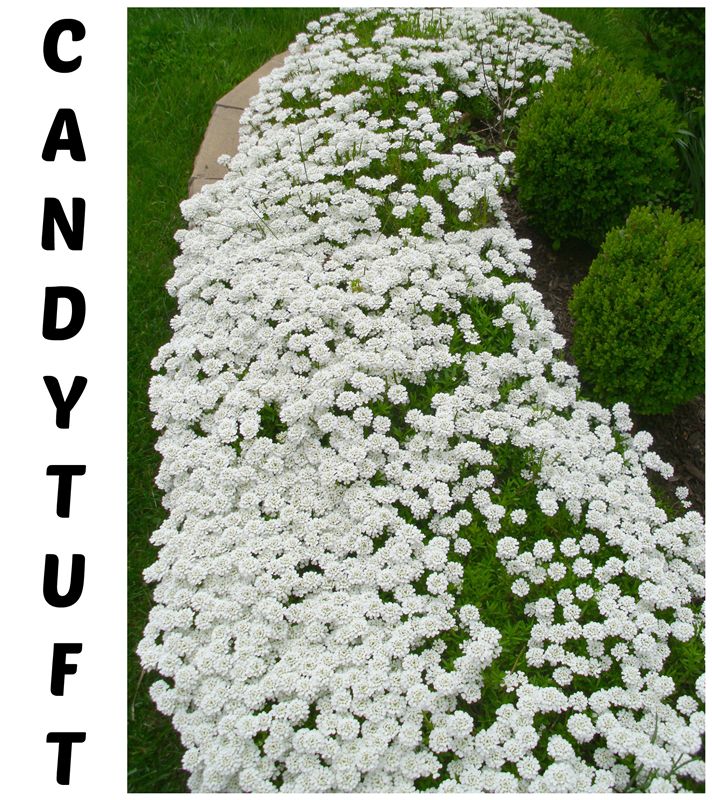 In regions with a mild climate, winter sowing is practiced.
In regions with a mild climate, winter sowing is practiced.
Flower growers of the middle zone stratify seeds before planting for two months on the bottom shelf of the refrigerator, sown for seedlings in February - March.
For lush flowering and maintaining shape, annual pruning is carried out in the spring, shortening the shoots by a third. Of these, if desired, you can create whole heather glades that will bloom from spring to autumn.
Heather is available in a wide range of varieties (about 500), different in height, leaf color and flower color
Erica - a relative of heather, differing from it in the time of flowering, which begins in spring, and needle-shaped leaves. Heather blooms in late summer - autumn and has more scaly leaves.
White, pink, burgundy, blue, purple "bells" of erica after flowering retain their decorative effect for a long time
The lower tier of flowerbeds and alpine hills are a great place for ordinary podbel.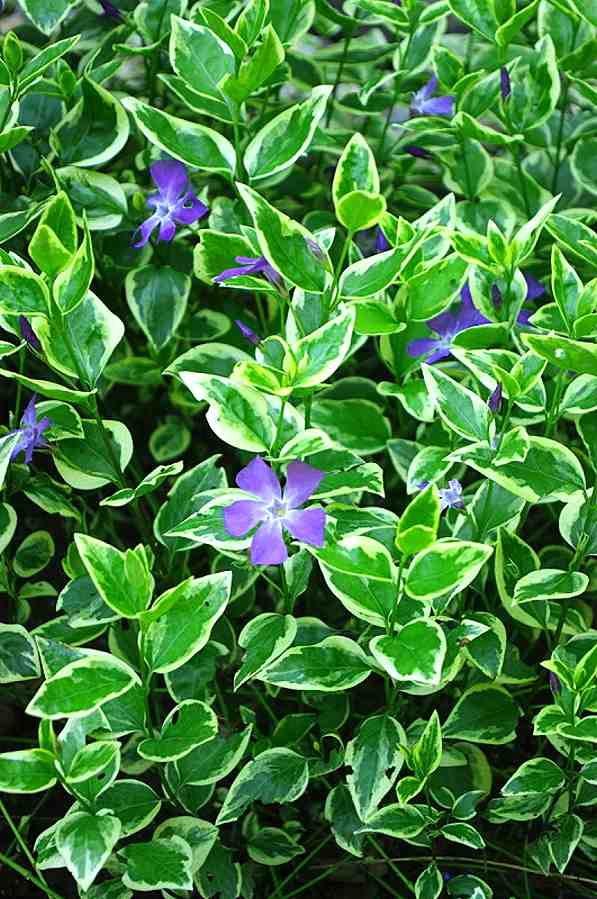 Its second name is Andromeda. The plant is poisonous, so you need to work with it very carefully.
Its second name is Andromeda. The plant is poisonous, so you need to work with it very carefully.
Pale pink, like porcelain jugs, drooping white flowers set off in contrast by dark bluish-green foliage
Ground covers
Perennial evergreen ground covers are not only permanent residents of rocky gardens, slopes and flower beds with stone decor. They are planted in the forefront of ordinary flower beds, sometimes used as a lawn, decorated with tree trunks of fruit and ornamental trees, shrubs, settled on poor, sandy soils. All of them are very unpretentious, have the ability to grow quickly and fill the space. Forming a thick carpet or dense pillows, such plants give the landscape a forest color (periwinkle, tenacious) or imitate the atmosphere inherent in mountain landscapes (antennaria, bryozoan). In addition, they help control the growth of weeds.
Antennaria
Very attractive due to the felt, silvery pubescence of foliage, soft, pretty inflorescences, thanks to which it received the popular name "cat's paw".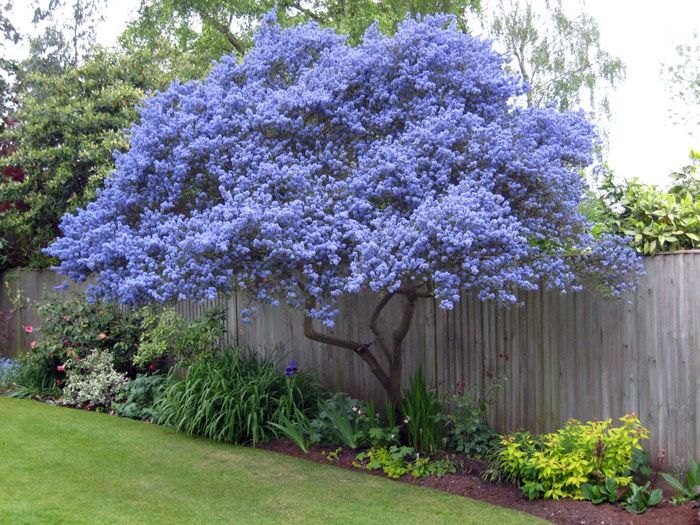 Belongs to the Compositae (Asteraceae) family. In nature, it grows in mountainous areas, pine forests.
Belongs to the Compositae (Asteraceae) family. In nature, it grows in mountainous areas, pine forests.
Three varieties of Antennaria are cultivated: alpine, dioecious (pictured) and plantain-leaved
Periwinkle
Surprisingly viable plant from the Kutrovye family. Due to the high content of alkaloids, it is poisonous, but, nevertheless, it is very much appreciated by gardeners for its unpretentiousness, shade tolerance, the beauty of the dark green carpet formed and rather large, often blue hues, flowers.
At present, cultivars of small periwinkle with white, pink, red color of the corolla, terry, with variegated leaves have been bred
Creeping tenacious
which is also affected by the degree of illumination. Greenish-cream, burgundy, pinkish, purple-violet, with spots and stains ... The tenacious is often planted in flowerbeds, alpine slides, where it fills well the voids between the stones, along the paths.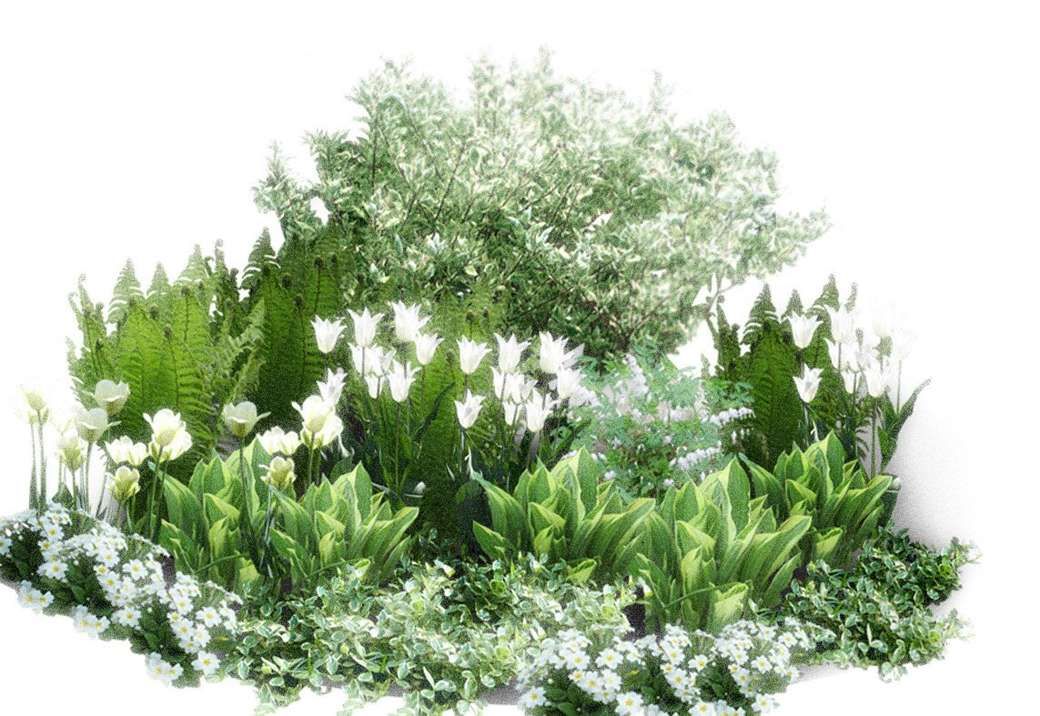
Tenacious is excellent for decorating shady places, for example, near the wall of a house or under trees, in combination with hosta, astilba, spirea. From the end of spring it is covered with small snow-white flowers, which continue to appear until autumn. Forms dense cushions. It is placed in rocky gardens, used as an element of borders, as a lawn cover.
The second name - Irish moss, bryozoan received for its external similarity with mosses. The homeland of the plant is Scandinavia and Eastern Europe
Video
Useful tips for choosing evergreens for decorating garden plots in different regions are shared by specialists and experienced flower growers in the following videos:
About the author:
Natalya Grigorieva
Has two higher educations in the specialties "Biology" and "Publishing" (diplomas with honors). For 15 years she worked as an editor-in-chief in a weekly regional newspaper. He knows firsthand how to raise chickens, rabbits, piglets (my parents kept a small farm). Today he is fond of indoor, balcony and garden floriculture. It is a strict taboo for purchased seedlings: she grows it herself, and shares the surplus with colleagues and friends. He loves the time of harvesting and harvesting and forest gifts. And he still cannot imagine his life without dogs, cats and books. Natalia enjoys learning and sharing her knowledge and experience with readers.
Found a mistake? Select the text with the mouse and press:
Ctrl + Enter
Did you know that:
In small Denmark, any piece of land is a very expensive pleasure. Therefore, local gardeners have adapted to grow fresh vegetables in buckets, large bags, foam boxes filled with a special earthen mixture. Such agrotechnical methods allow you to get a crop even at home.
Therefore, local gardeners have adapted to grow fresh vegetables in buckets, large bags, foam boxes filled with a special earthen mixture. Such agrotechnical methods allow you to get a crop even at home.
Share:
Subscribe to our VK group:
See also
Interesting Top 20 best products from Aliexpress for gardening
Other How to treat a greenhouse in the fall from diseases and pests
Apple tree How to feed apple trees in autumn
Cucumber Growing cucumbers on a windowsill
Interesting For which plants on the site can be fined and prosecuted
Interesting Nettle: 5 ways to use in the garden and vegetable garden
Other What flowers are planted in autumn
Interesting Ways to use 5-liter plastic bottles in the country
Grape How to feed grapes in autumn
Peony How to feed peonies in autumn
Interesting How to properly water trees and shrubs in the garden
Interesting How to grow an avocado from a seed
Beekeeping Breeding bees for beginners: seven main questions
Grape Wild grapes
Garlic What to plant after garlic next year
Currant How to increase the yield of currants: 4 basic rules
Interesting Growing ginger at home
Interesting Top 5 mistakes when growing tomatoes
siderates Siderates for the garden in autumn
Interesting Pharmacy preparations in the garden: benefits and harms
Questions from readers
Question: In the spring we bought a piece of land with a house.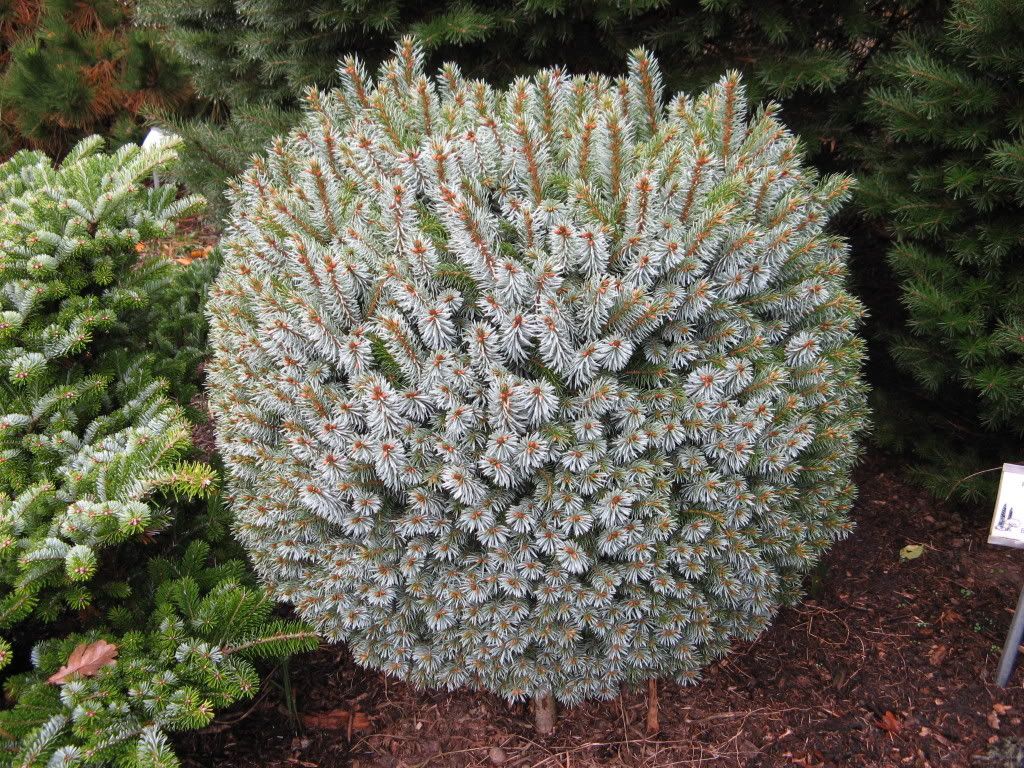 A vegetable garden was laid out, existing fruit trees and bushes were used. But then the former owner appeared with the intention of collecting ripe berries and fruits, claiming that they belonged to him. Are we obliged to give the harvest?
A vegetable garden was laid out, existing fruit trees and bushes were used. But then the former owner appeared with the intention of collecting ripe berries and fruits, claiming that they belonged to him. Are we obliged to give the harvest?
Answer: From the moment you sign the contract of sale, the land and everything on it belongs to you. This is... | Read more
Question: Several times a season I mow the lawn and the space behind the fence. There are a lot of herbs. Is it possible to mulch the beds with it?
Answer: Most experts agree that freshly cut grass for mulching beds is not quite... | Read more
More questions and answers
7 evergreens for the garden: photos and names, what to plant in the country
Evergreens - a win-win option for decorating the site. In summer, their juicy greenery sets off the bright inflorescences of flowering plants, in winter it looks great against the backdrop of white snow. At any time of the year, they decorate the local area. We will understand the features of "undying" cultures and get acquainted with their best types.
At any time of the year, they decorate the local area. We will understand the features of "undying" cultures and get acquainted with their best types.
Everything about evergreens for the garden
What is it
7 best garden views
— Coniferous
— Deciduous
Many people think that only conifers belong to evergreen crops, and even then not all of them. In fact, this is not so. Many plants retain their greenery all year round, but they do it in different ways. In evergreen foliage "lives" for several years. It does not fall either in the warm or in the cold season. This group includes mostly trees and shrubs.
There are also winter green crops. Their foliage remains throughout the winter season, and it completely retains its color. New leaves appear in the spring, after which last year's leaves fall off. This group includes mainly shrubs and herbaceous perennials.
Both groups can be used to decorate your garden with perennial greenery. It is important not to confuse them, because the care of crops should be different. Evergreens are less whimsical, better adapt to various conditions. Therefore, they are often chosen for growing on the site. They are suitable for spacious areas and for small areas. There are many varieties of them: from tall to dwarf.
It is important not to confuse them, because the care of crops should be different. Evergreens are less whimsical, better adapt to various conditions. Therefore, they are often chosen for growing on the site. They are suitable for spacious areas and for small areas. There are many varieties of them: from tall to dwarf.
Instagram dachnye_stories
Instagram irivaz777
All crops that preserve greenery all year round can be divided into two groups. Let's talk about each of them.
Coniferous
Their main difference from other plants is the leaves in the form of thin long needles. Some conifers have flat, scaly foliage. The seeds of almost all ripen in cones, the shape, size and shade of which depend on the species. We list the most popular evergreen conifers among gardeners.
1. Spruce
Beautiful downy tree with short needles and brown cones. The average tree height is 25-30 m, under favorable conditions it grows up to 50 m. Spruces tolerate shading well, can grow in partial shade and in the sun. Sensitive to humidity and air purity. Prefer slightly alkaline light soils and moderately moist loams. There are more than 45 varieties of conifers. For the site, you can recommend such types.
The average tree height is 25-30 m, under favorable conditions it grows up to 50 m. Spruces tolerate shading well, can grow in partial shade and in the sun. Sensitive to humidity and air purity. Prefer slightly alkaline light soils and moderately moist loams. There are more than 45 varieties of conifers. For the site, you can recommend such types.
- Ohlendorf. A multi-vertex undersized Christmas tree with needles of a golden-green hue. Grows up to 200 cm.
- Akrokona. Compact spruce up to 400 cm, grows very slowly. The needles are dark green, the cones are lilac-raspberry.
- German Nau. Dwarf Christmas tree no more than 150 cm high. The crown is cushion-shaped, the needles are grayish-blue.
Spruces are good in single and group plantings, for example, at the main entrance to the house or as the central figure of a multi-tiered composition. Dwarf and undersized specimens are planted in mixborders or rockeries, they make up hedges.
Pixabay
Instagram green_garden. ua
ua
2. Cypress
Tall conifer with scaly leaves. The crown can be pyramidal or spreading. Dislikes bright sunlight and strong shade. The best option is penumbra. Prefers loose fertile soil mixtures. It does not tolerate waterlogging, in the lowlands it is planted only on drained soils. We list the best varieties for decorating the local area.
- Large-fruited. Tall tree with beautiful yellowish needles. It can grow up to 35-40 m, so pruning is required. It has a very pleasant lemon scent.
- Tuiform. Compact tree with a pyramidal crown of bluish-green color. Its feature is the presence of needle needles, which gradually turn into scaly ones.
- Leyland. Tall fast-growing hybrid with a columnar crown and scaly needles. The trunk is covered with a glossy bark of dark red or brown tone.
Cypresses are unpretentious, tolerate pruning well. Low-growing varieties can be used as the basis for a topiary.
Pixabay
ShutterStock
3.
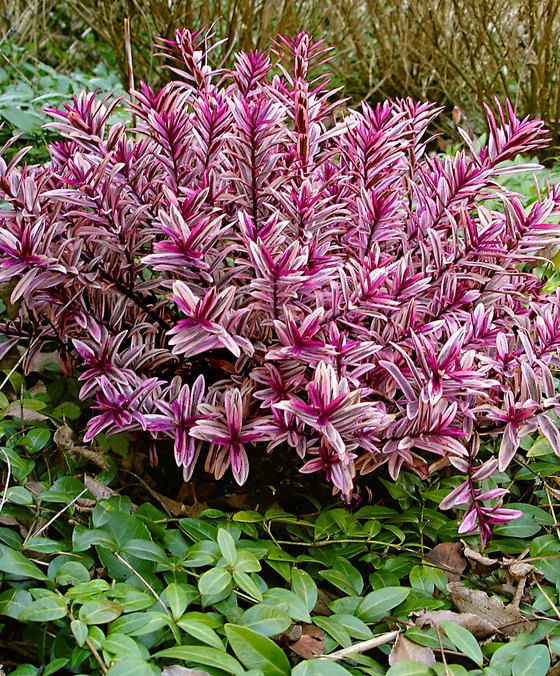 Yew
Yew Beautiful slow growing conifer. There are shrub and woody varieties. The needles are short, soft, very pleasant to the touch, deep green. Forms fruits in the form of scarlet berries. Yew shade-tolerant and unpretentious. It takes root well on any soil, but prefers a fertile neutral substrate without excessive moisture. We list the best varieties for landscaping the site.
- Pointed. Tree-like varieties can reach 20 m, but on average do not grow above 6 m. Shrub species are low, creeping. The needles are crescent-shaped, dark green on top and light on the back.
- Short-leaved. A multi-stemmed slow growing tree growing from 5 to 15 meters. The crown is wide, shaped like a pin. The needles are flat, straight. Berries are bright scarlet.
- Canadian. Frost-resistant variety of shrub type. It grows up to 100-150 cm in height and up to 300-400 cm in width. In winter, the needles acquire a red-brown hue.
All cypress trees tolerate pruning well, which is used in landscape design to create topiaries and park sculptures.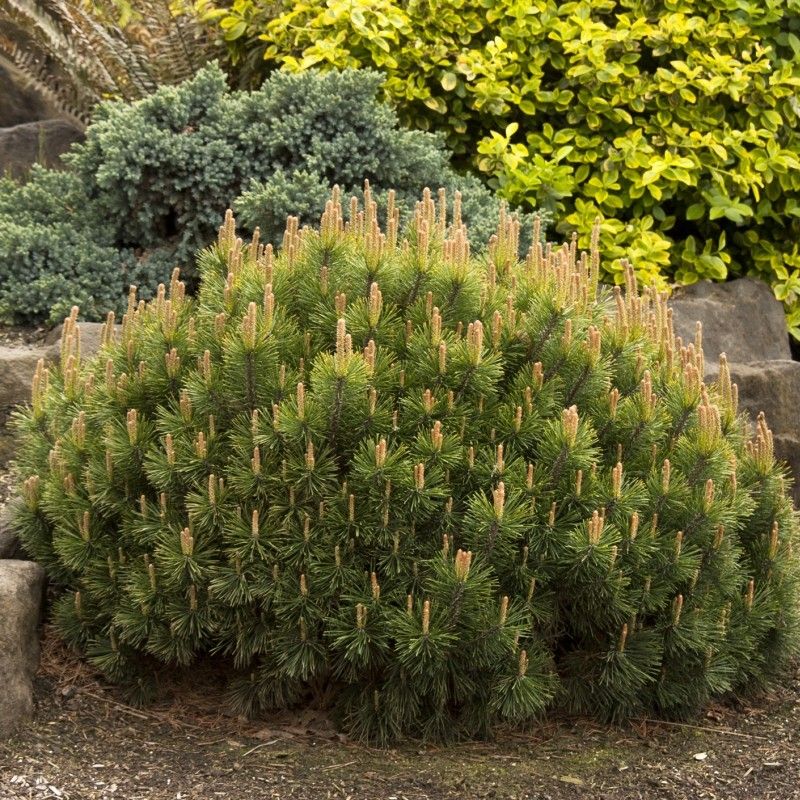 You need to know that cypress cones, bark and needles contain substances that are toxic to humans and animals. Therefore, it is necessary to plant it with caution where children and pets will walk.
You need to know that cypress cones, bark and needles contain substances that are toxic to humans and animals. Therefore, it is necessary to plant it with caution where children and pets will walk.
Pixabay
ShutterStock
ShutterStock
4. Thuja
Decorative conifer with many varieties. Among them there are dwarf shrubs growing up to half a meter, and seventy-meter giant trees. Tui are unpretentious, frost-resistant, grow well in partial shade and shade. Young seedlings have soft needles, which eventually turn into scaly needles. For the adjacent territory, such varieties can be recommended.
- Brabant. Refers to Western varieties. Frost-resistant fast-growing thuja with emerald needles. The crown is pyramidal in shape. Under natural conditions, it can grow up to 40 m, in decorative plantings it does not exceed 4 m.
- Biota. Oriental variety with small needles tightly pressed to the branches. The crown is openwork-pyramidal.
 Cones are small, greenish-blue, dark brown when ripe.
Cones are small, greenish-blue, dark brown when ripe. - Japanese. An ornamental coniferous tree up to 9 m high. The crown is pyramidal, the branches are directed upwards. The needles are emerald green with a silvery sheen and have a strong pleasant aroma.
Tui are very different, which makes it possible to choose the most suitable type for your site. They go well with other plants, especially boxwood, juniper, barberry. Suitable for arranging hedges, flower beds and single plantings.
Pixabay
Pixabay
Deciduous
Deciduous plants differ from conifers in the presence of lamellar petiole foliage. Its shape and size can be very different. We offer names and photos of deciduous evergreens for the garden.
1. Heather
A monotypic creeping shrub from 25 to 70 cm high. It has many upwardly directed branches covered with small triangular leaves.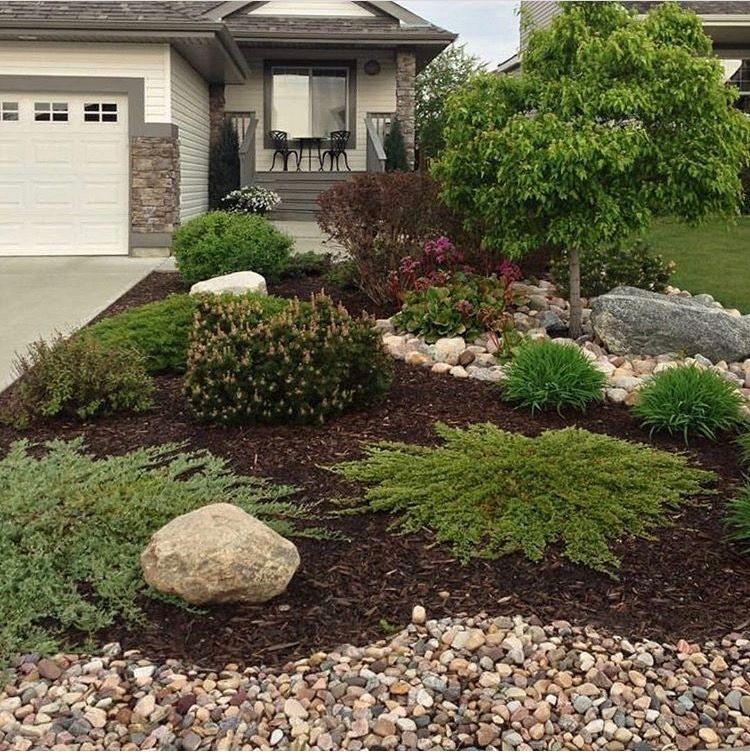 They are bright green in color, slightly rolled into a tube. Heather blooms in mid-summer. It is covered with bells of a lilac-pink hue. The plant is unpretentious, prefers open areas and slightly acidic soils. Feels good on poor soils. For landscape decoration, you can recommend these varieties of heather.
They are bright green in color, slightly rolled into a tube. Heather blooms in mid-summer. It is covered with bells of a lilac-pink hue. The plant is unpretentious, prefers open areas and slightly acidic soils. Feels good on poor soils. For landscape decoration, you can recommend these varieties of heather.
- Erika. It grows as a semi-shrub, shrub or tree with small, needle-like leaves. Pink or white flowers resemble drooping bells, collected in large brushes.
- Yana. Compact shrub up to 30 cm high. Branches are very dense, straight, directed upwards. The flowers are large, double, bright pink. Flowering begins in early autumn, ends in November.
- Carmen. A compact rounded bush 30-40 cm high. The shoots are covered with very small leaves of a rich dark green tone. Purple or pink flowers are collected in long, up to 10 cm, peduncles.
Heather is suitable for uniform plantings. For a greater decorative effect, you can choose different varieties. The evergreen bush goes well with other crops, for example, with juniper or thuja.
The evergreen bush goes well with other crops, for example, with juniper or thuja.
Pixabay
2. Boxwood
These are slow growing shrubs or trees from 2 to 10 m high. The crown is compact and very dense. The branches are covered with glossy dark green leaves of round or oval shape. Starting from the age of 15-18, boxwood blooms with small yellowish flowers with a pronounced honey aroma. Prefers a slightly acidic or neutral fertile substrate of moderate humidity. Here are the varieties recommended for landscaping.
- Small-leaved. Dwarf bush with a compact crown and densely branched stems. Covered with small rounded leaves. It grows very slowly, a few millimeters per year.
- Colchis. A tree 12-15 m high. Young specimens are not higher than 2 m. The branches directed upwards are covered with oval leaves of emerald green color. It does not tolerate frost well, winter shelter is required.
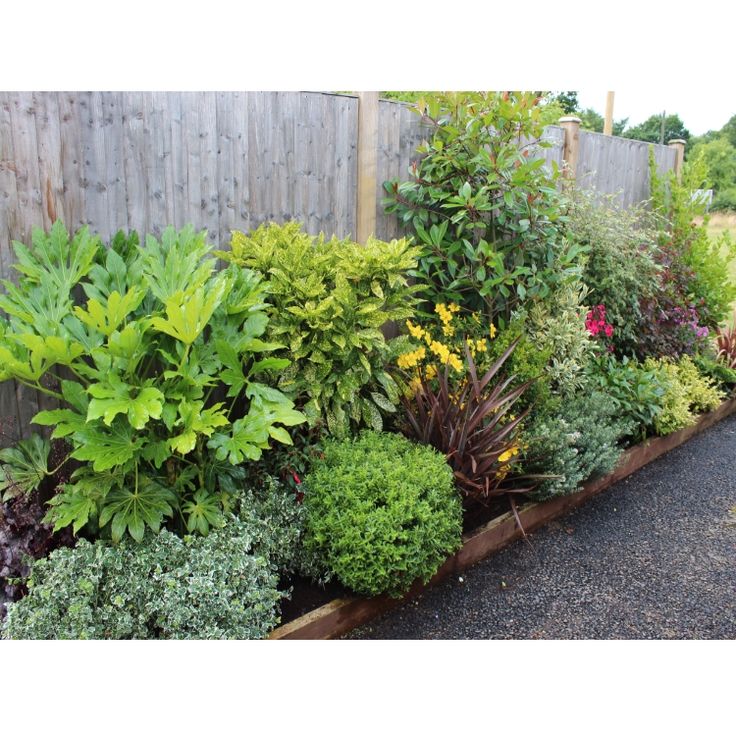
- Balearic. The largest variety. It occurs as a tall shrub or tree with a pyramidal crown. The leaves are ellipsoid, up to 5 cm long. It grows quickly, tolerates frosts down to -18˚С.
Boxwood pairs well with flowering plants such as hydrangeas, roses or rhododendrons. It is planted in multi-tiered flower beds, in mixborders. It easily tolerates pruning, so it is used to create topiaries, hedges.
Instagram annakotun
Pixabay
3. Honeysuckle
Differs in great species diversity. It happens one- and perennial, grows in the form of a liana or shrub. There are deciduous and leafy varieties in winter. Honeysuckle is decorative and edible. In the latter case, in addition to greens, you can also get a crop of large sweet and sour berries. The shrub is covered with oval-shaped leaves with wavy edges. The flowers, depending on the variety, can be white, pink or reddish.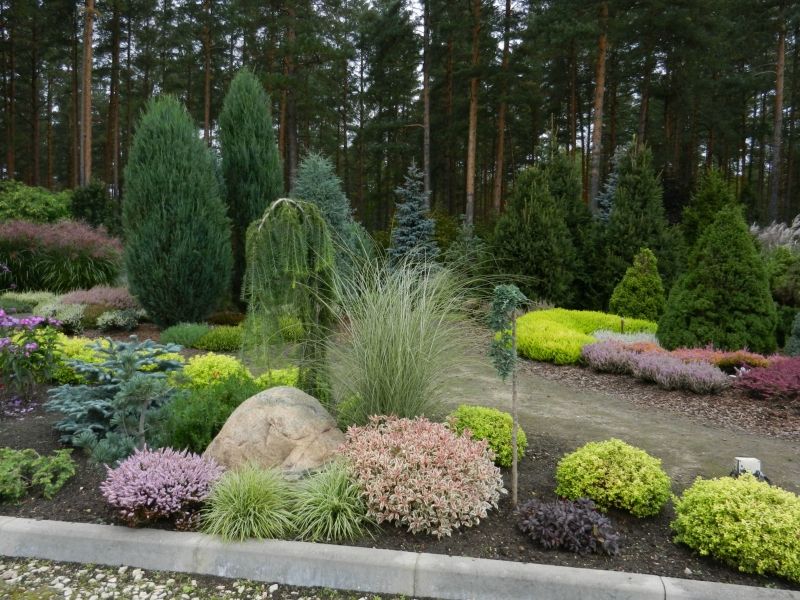
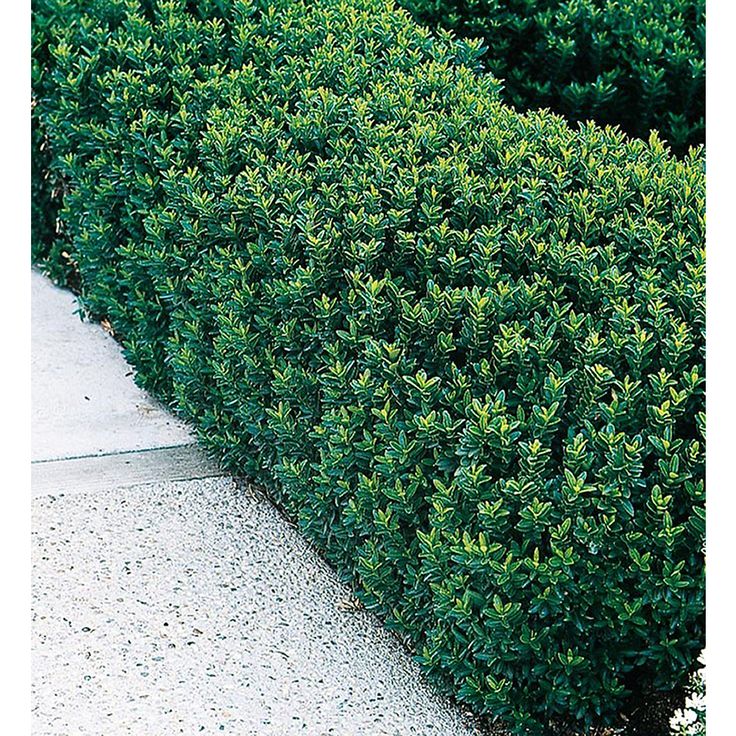 This is a creeping, creeping form. It is widely used as a ground cover under trees, in rock gardens. Needs shelter in winters with little snow
This is a creeping, creeping form. It is widely used as a ground cover under trees, in rock gardens. Needs shelter in winters with little snow  Notable for its dark foliage that turns red in autumn. Flowers inconspicuous, white or pink. Berries are red or black. Cotoneaster hedges often decorate city streets
Notable for its dark foliage that turns red in autumn. Flowers inconspicuous, white or pink. Berries are red or black. Cotoneaster hedges often decorate city streets 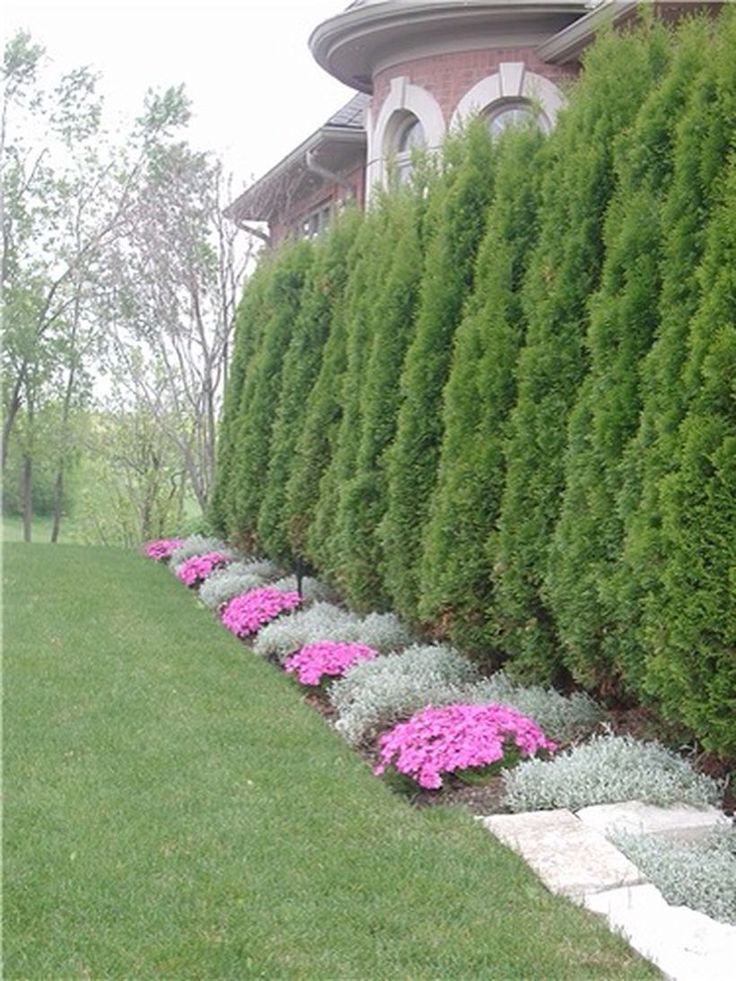 Prefers places protected from the wind, diffused light. Demanding on soil fertility, needs abundant watering
Prefers places protected from the wind, diffused light. Demanding on soil fertility, needs abundant watering 